As a wedding photographer, I jump at the opportunity to be part of and a witness to wedding traditions from various cultures. We’re so used to the Western “something borrowed, something blue” wedding concept that sometimes we forget other cultures have equally wonderful traditions. When the chance popped up to photograph Tithi and Sujal’s wedding with Our Ampersand Photography, I was so excited at the opportunity to catch a glimpse into their rich culture.
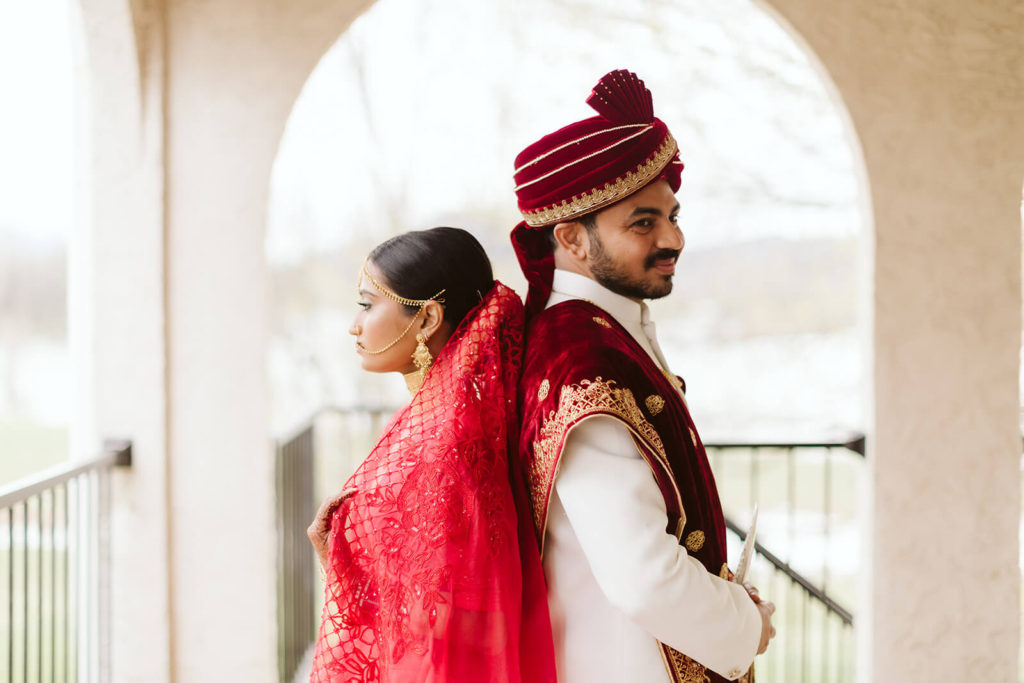
A Two-Day Wedding Celebration in Chattanooga
Indian weddings usually take place over the course of two or three days, with each day having specific ceremonies to prepare the couple for their new life together, and to give the families the chance to meet and give their blessings over the union. Tithi and Sujal’s wedding ceremony was no different.
Their wedding was a two-day affair with all of their family and friends present. It was such a large gathering! If there’s one thing I’m good at during wedding shoots, it’s adapting. Various cultures have different social norms than what we may be used to. However, as a professional wedding photographer, I consider myself flexible enough to work easily with anyone. Even if the entire photography timeline gets thrown off somehow, you can be rest assured that you’ll still receive beautiful photos of your day.
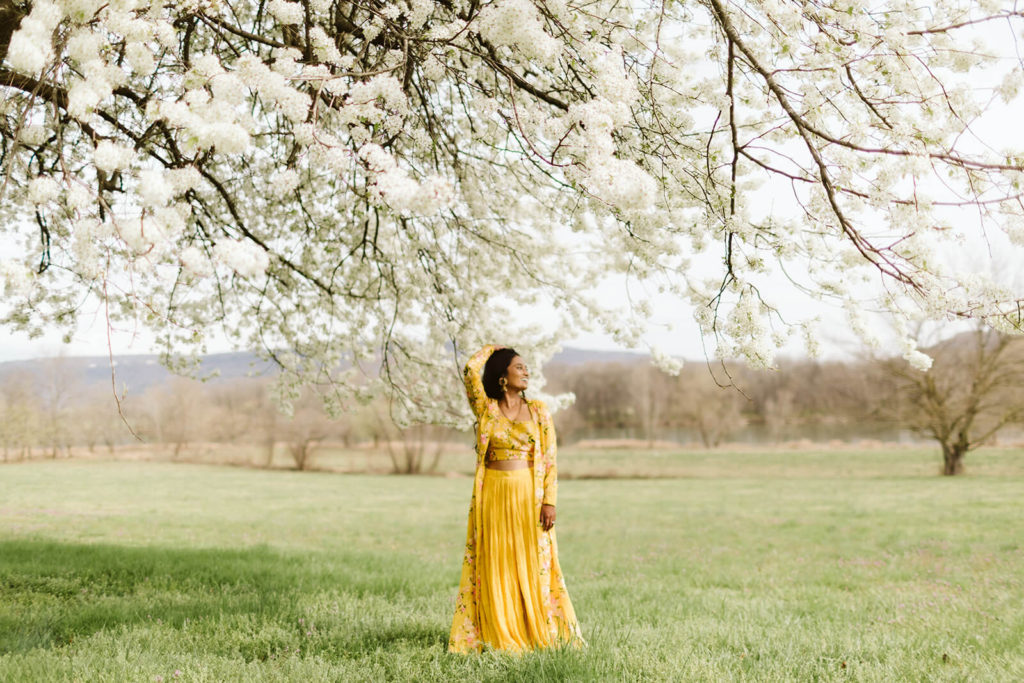
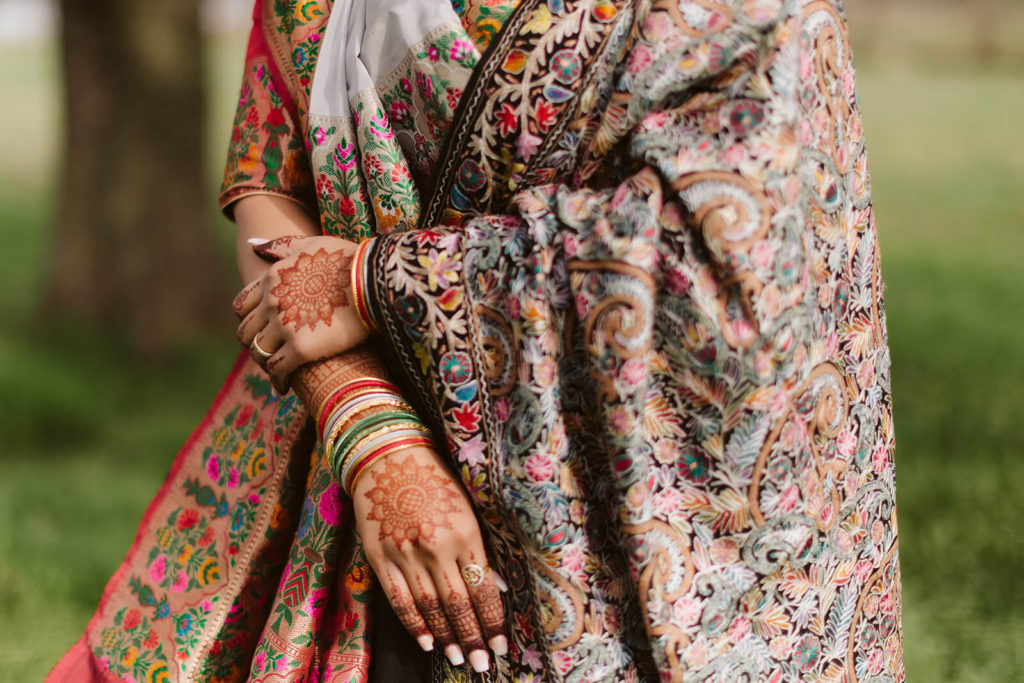
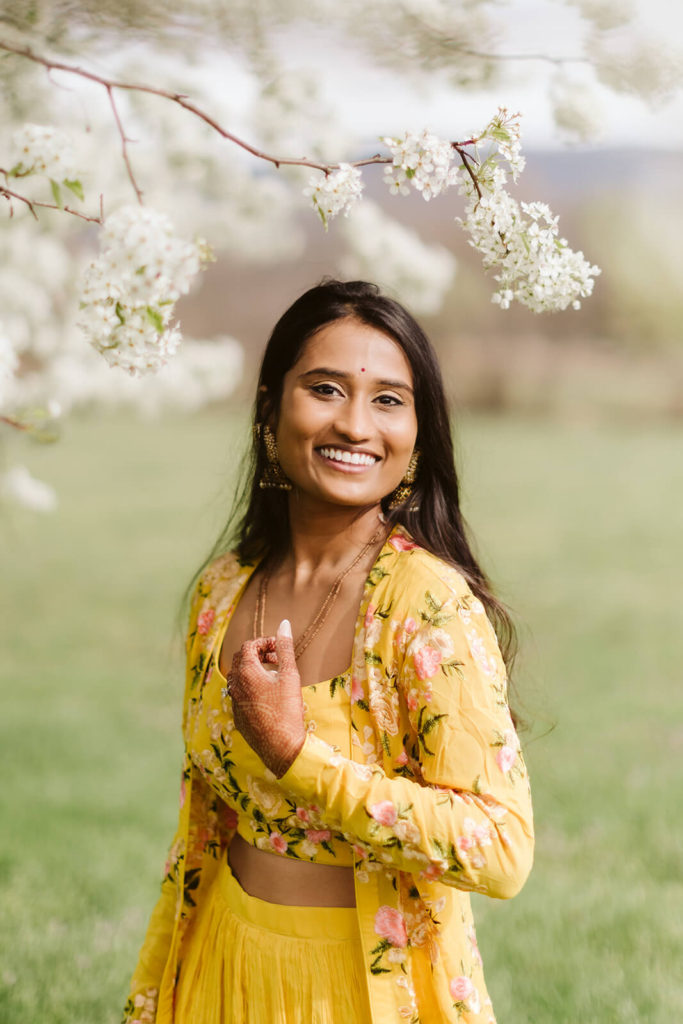
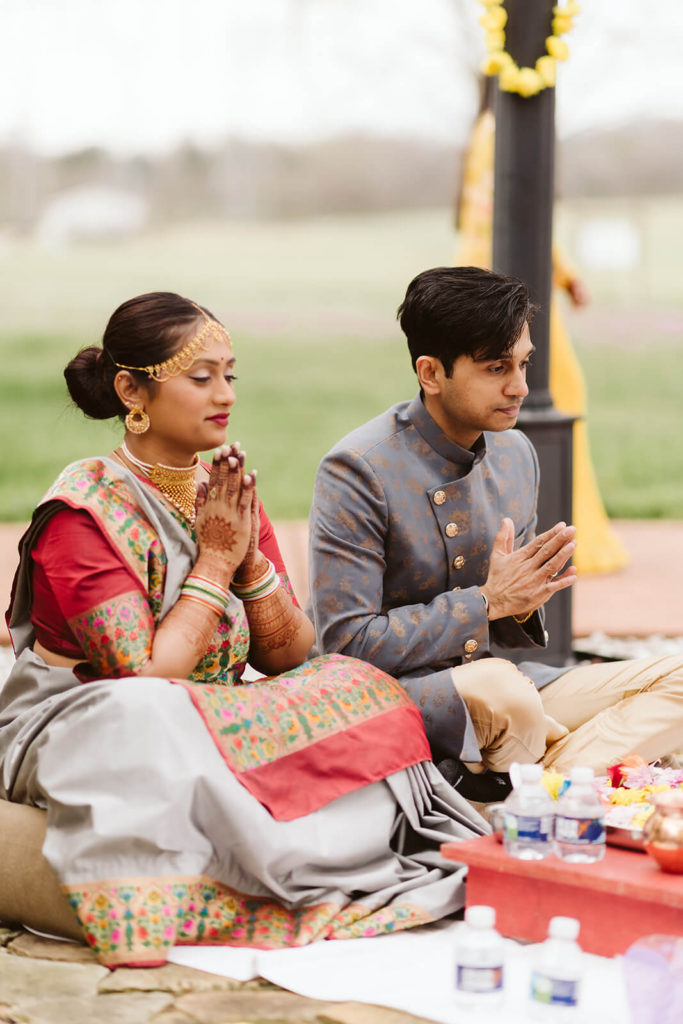
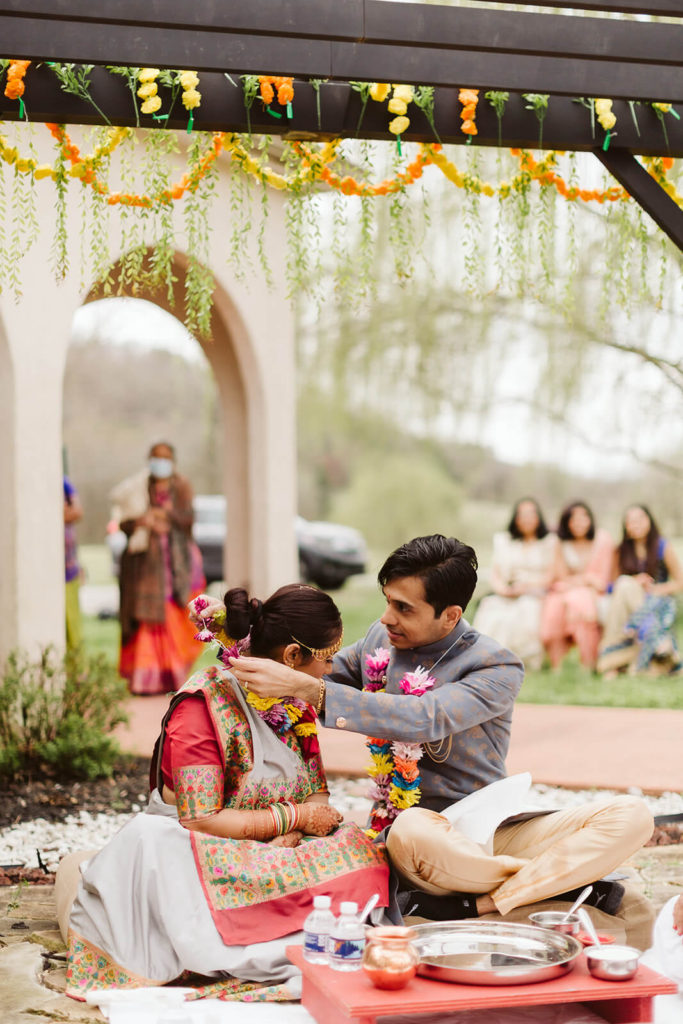
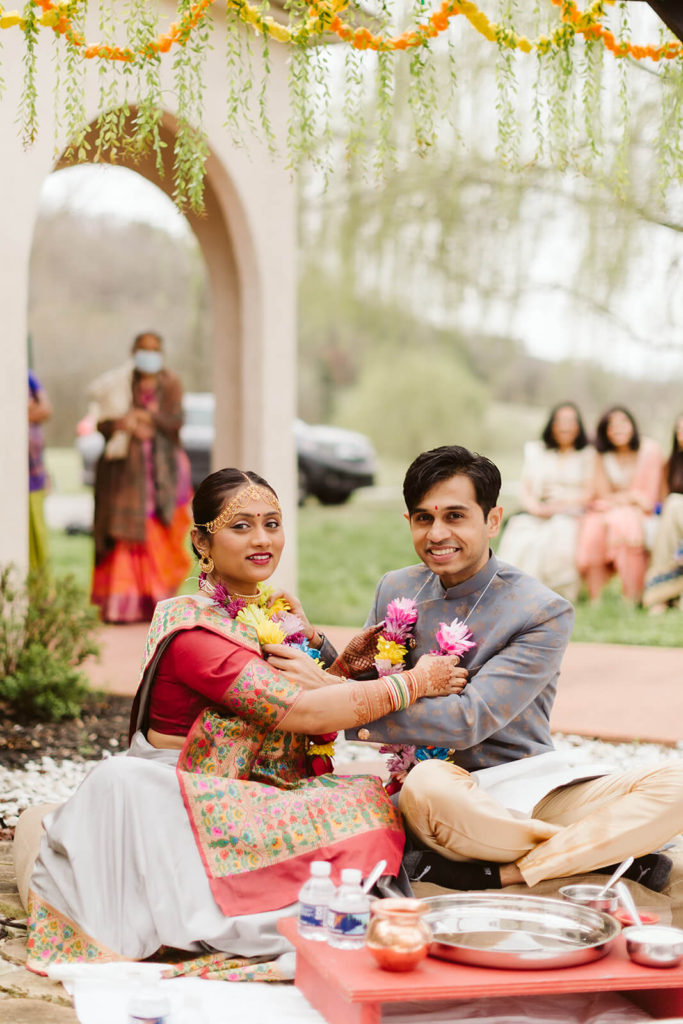

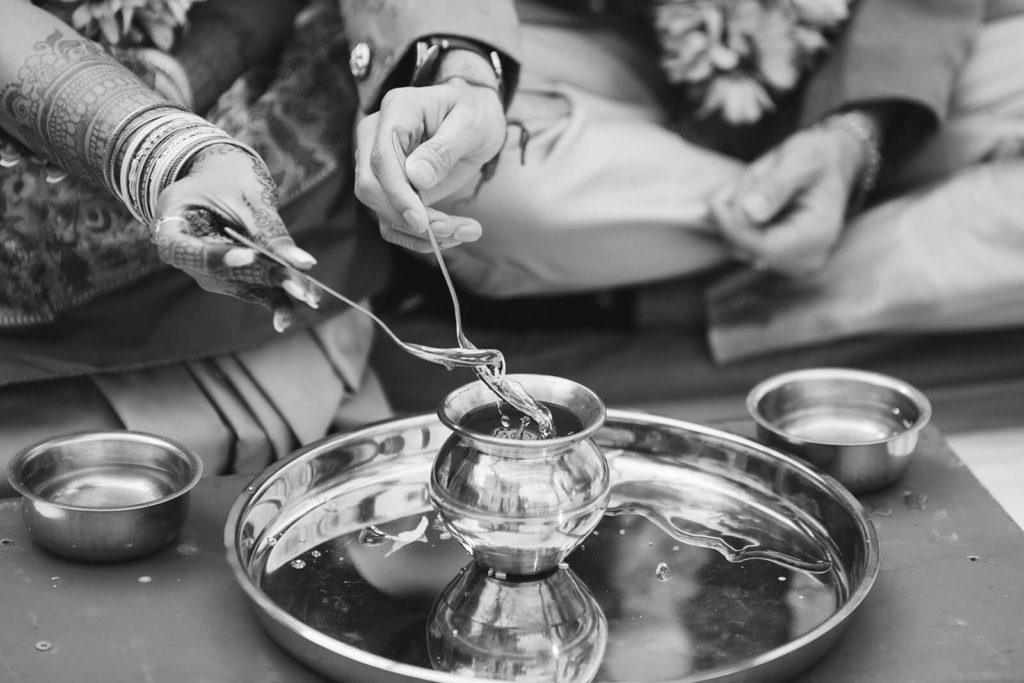

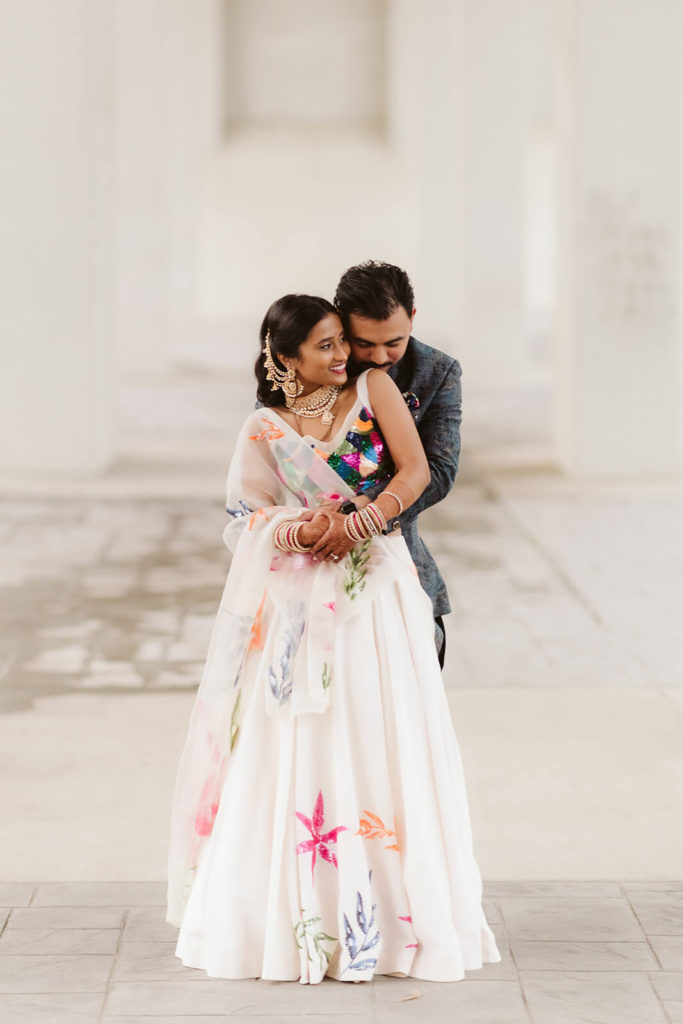
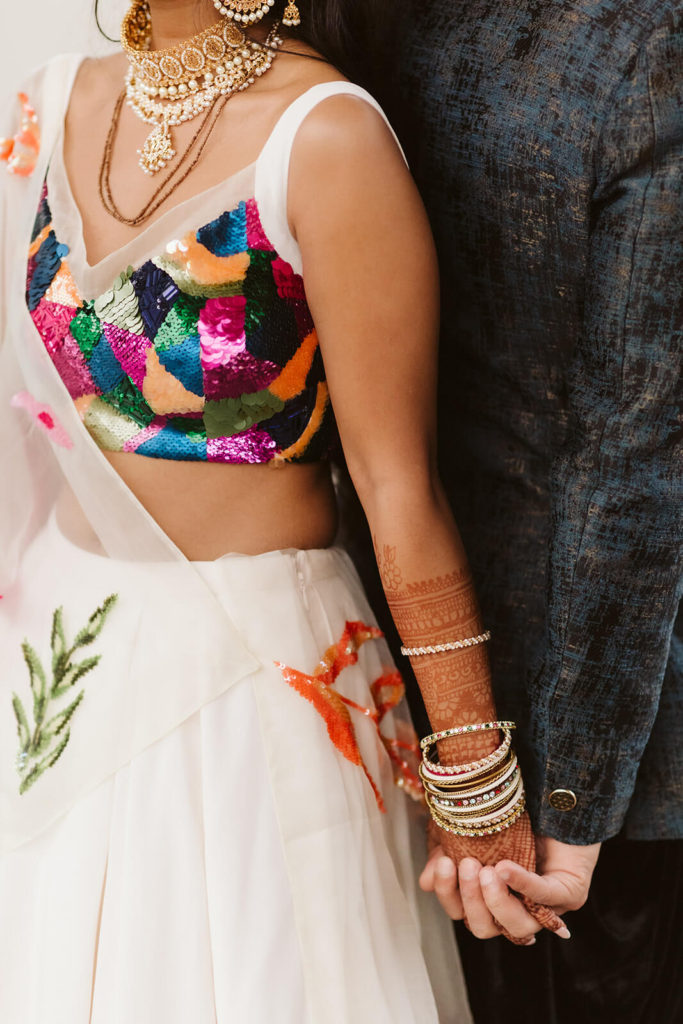


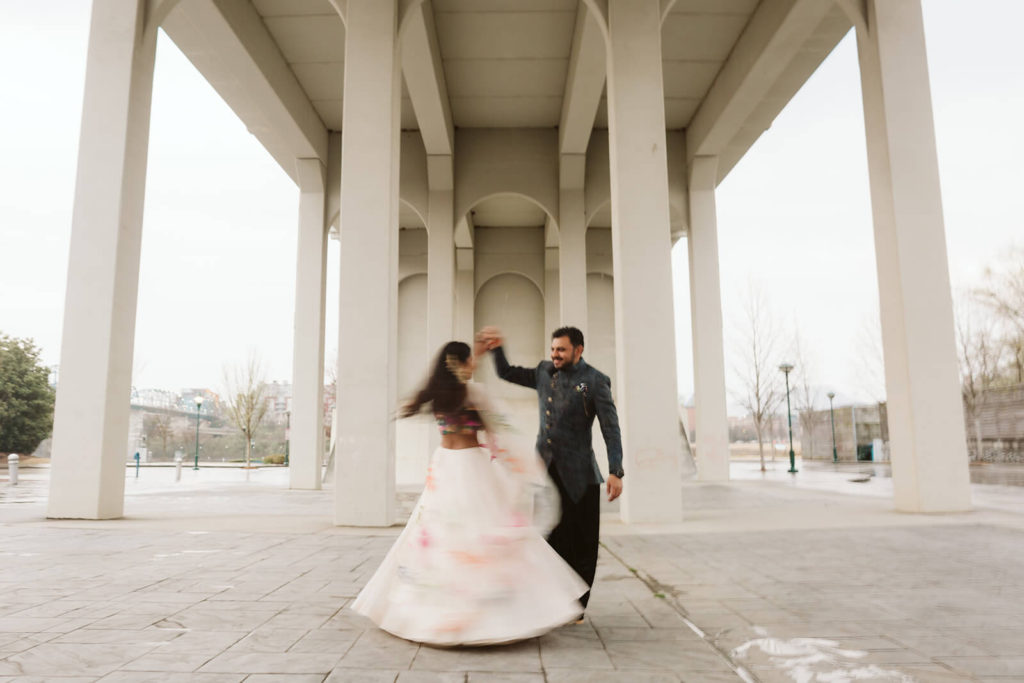
Pre-Wedding Ceremonies and Celebrations in Tennessee Riverplace and Downtown Chattanooga
The first day of Tithi and Sujal’s ceremony began with the Vidhi. The Vidhi is part of the traditional Indian pre-wedding ceremonies and in itself consists of three parts. The first is when the parents of the bride and groom seek blessings from Mother Earth to begin the wedding, and once the ritual of Mother Earth is complete, they’ll dig into the soil and begin building or decorating the mandap, or canopy, that the couple will get married in.
Tithi and Sujal’s Vidhi ceremony took place in their chosen venue, the Tennessee Riverplace in Chattanooga. The Tennessee Riverplace is a Spanish mansion set next to the Tennessee River with 135 acres of farmland and rolling hills for nature-centric ceremonies. Only immediate family members typically attend the Vidhi, gathering with a Maharaj, or priest, to perform Mandva Mahurat and Griha Shanti rituals. The Mandva Mahurat is a pooja, or worship ritual, to Lord Ganesh to banish negative energy and obstacles leading to the wedding, and the Griha Shanti is an invocation of the planets to seek their blessings.
Ceremonies completed, the couple and family walked the venue’s grounds for family portraits. The lush greenery and florals of the Tennessee Riverplace always provides a beautiful backdrop.
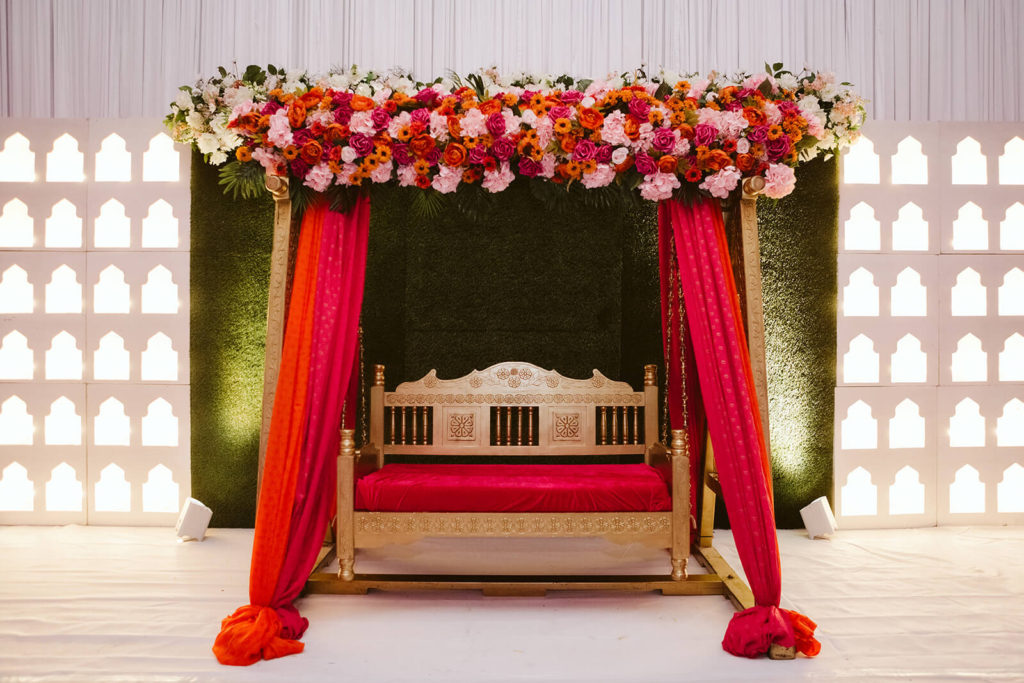
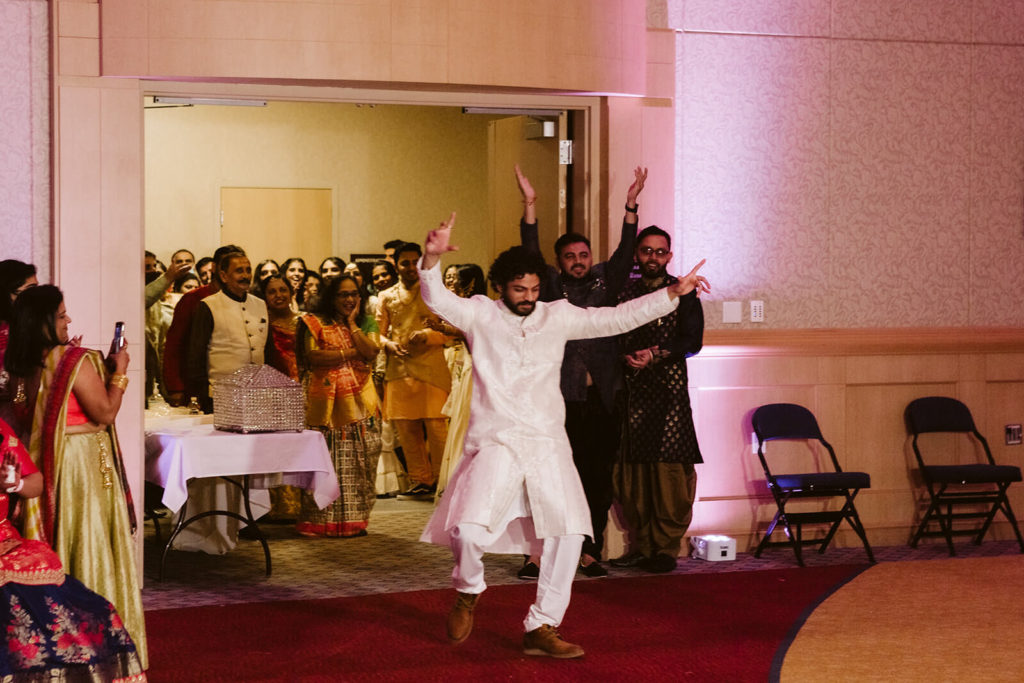
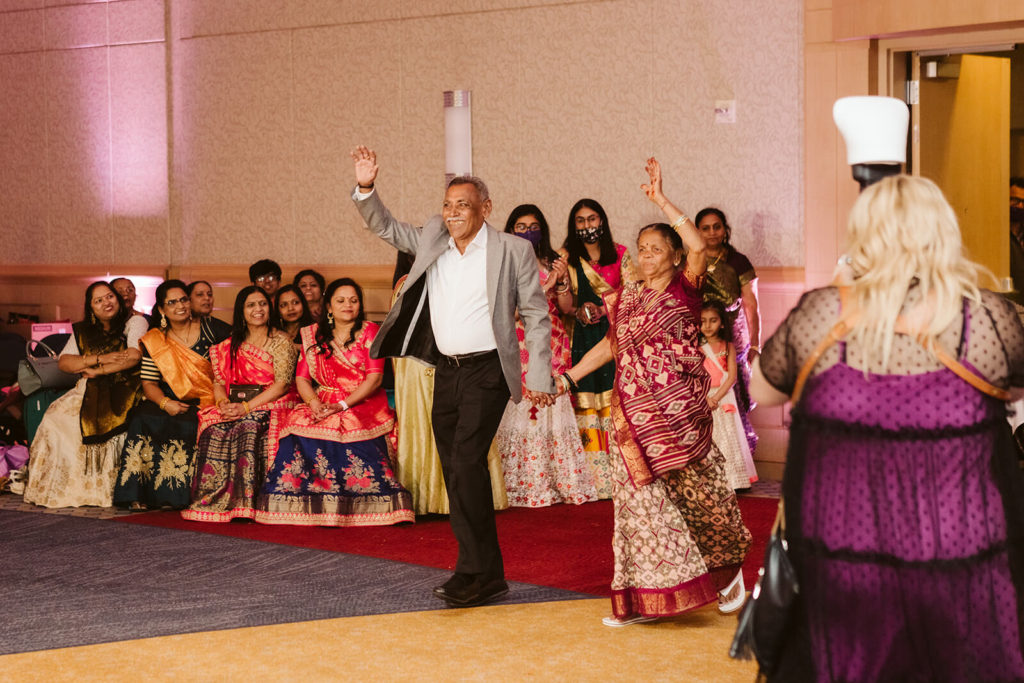
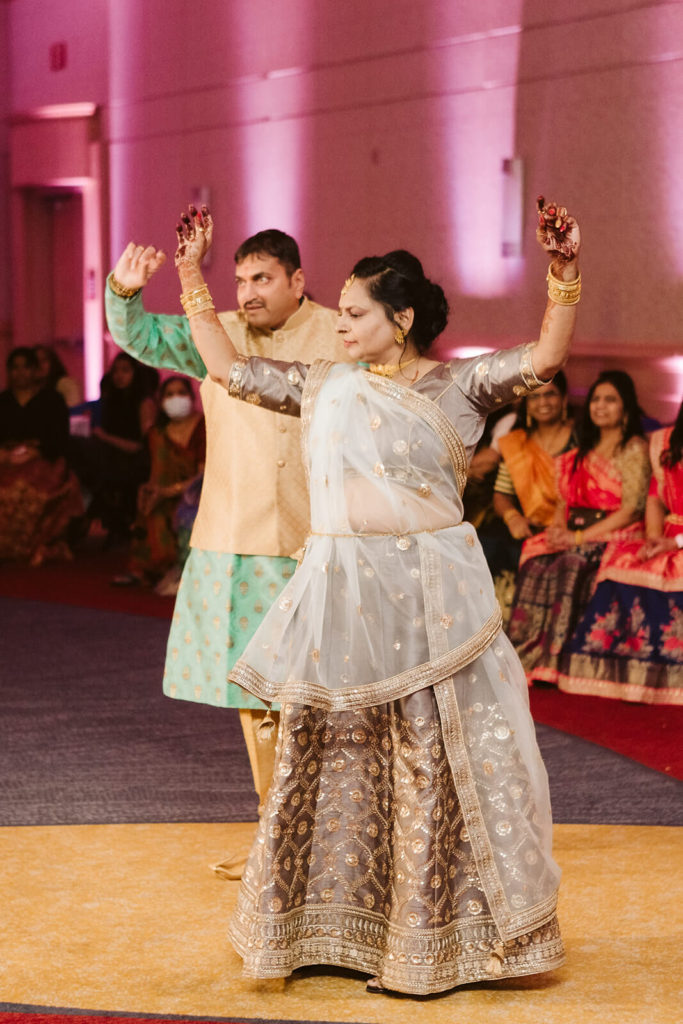
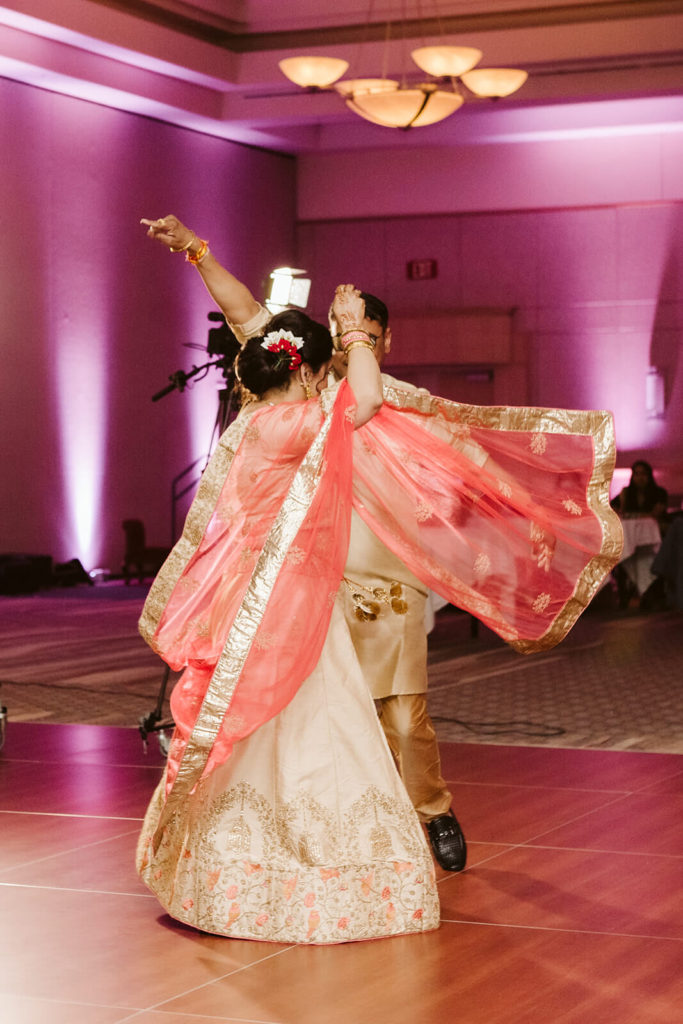
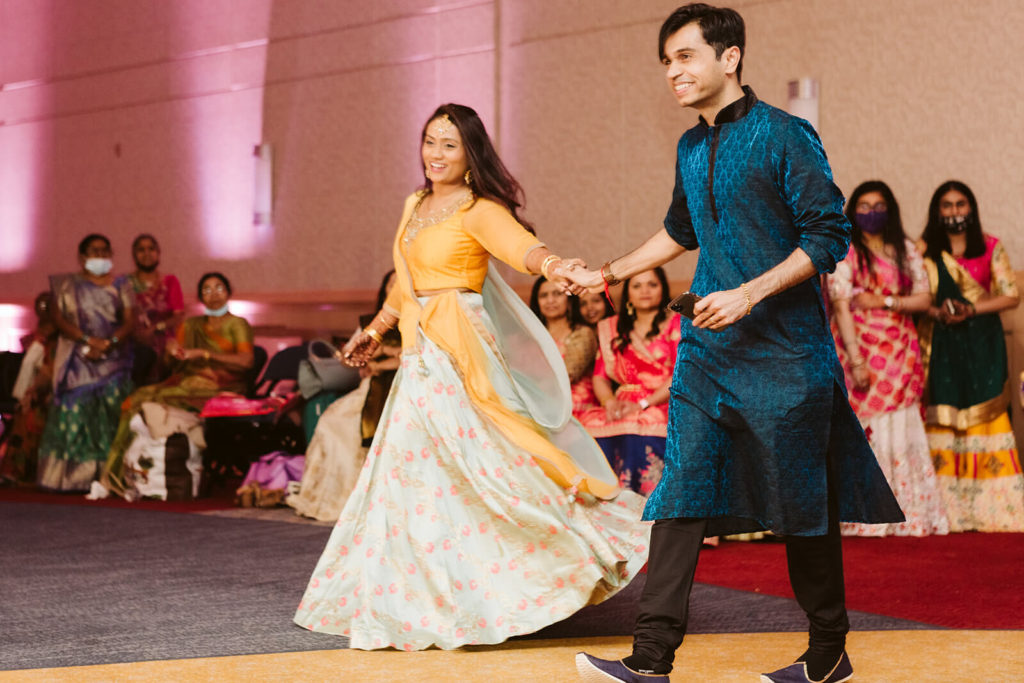
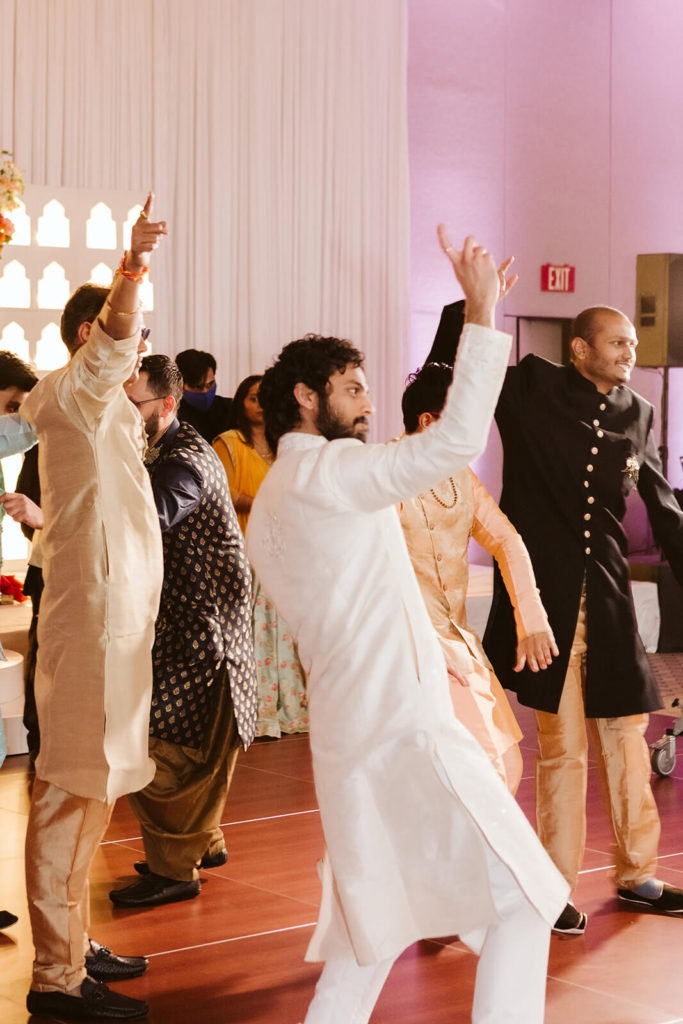

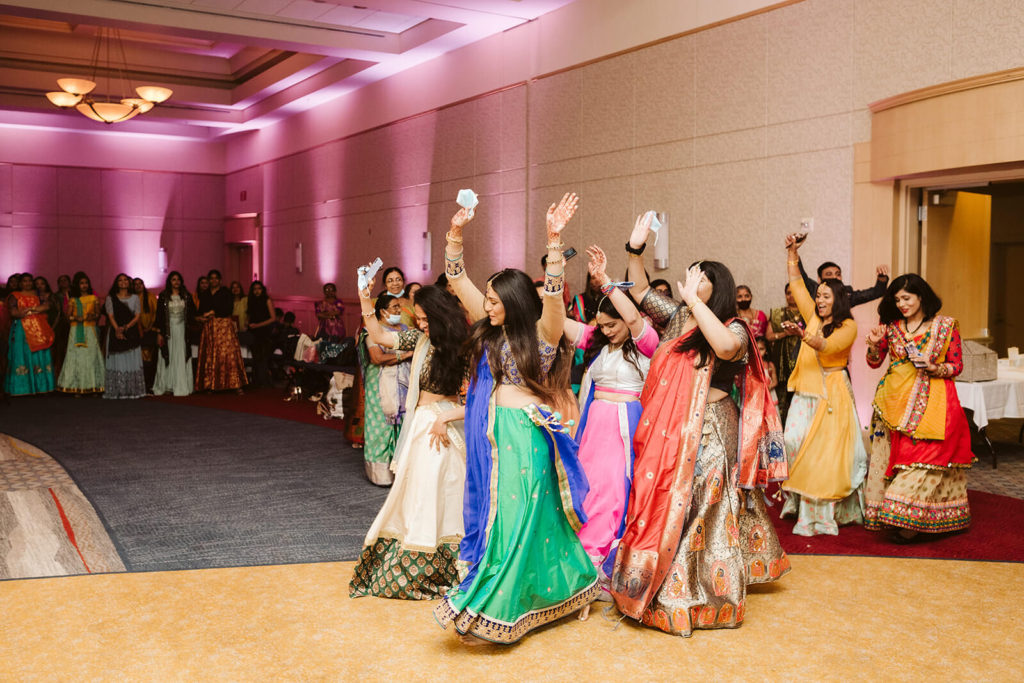
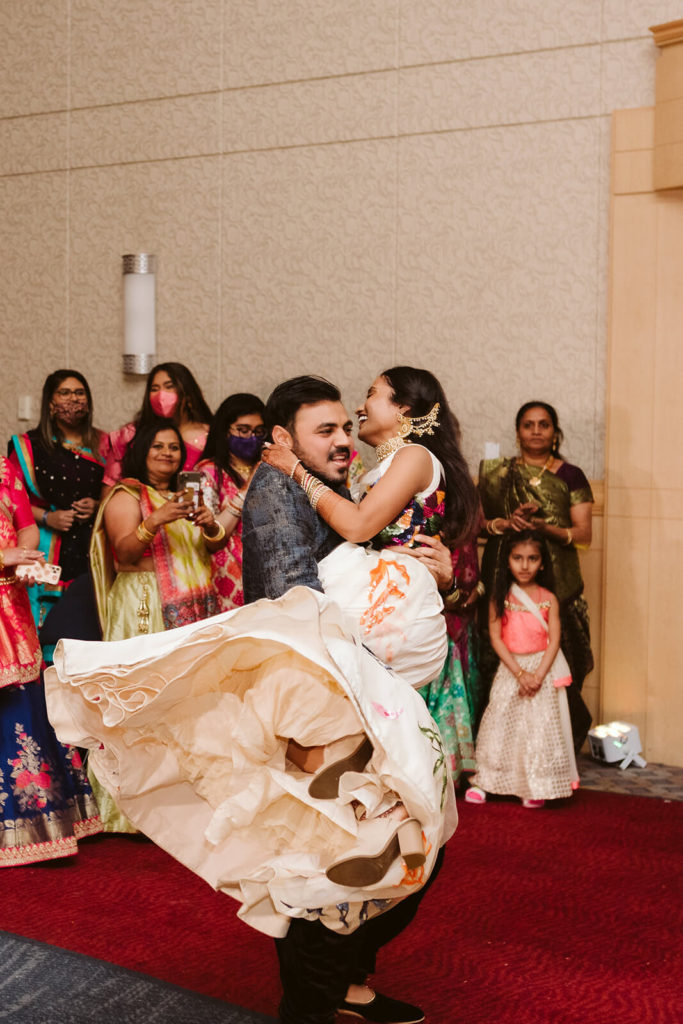
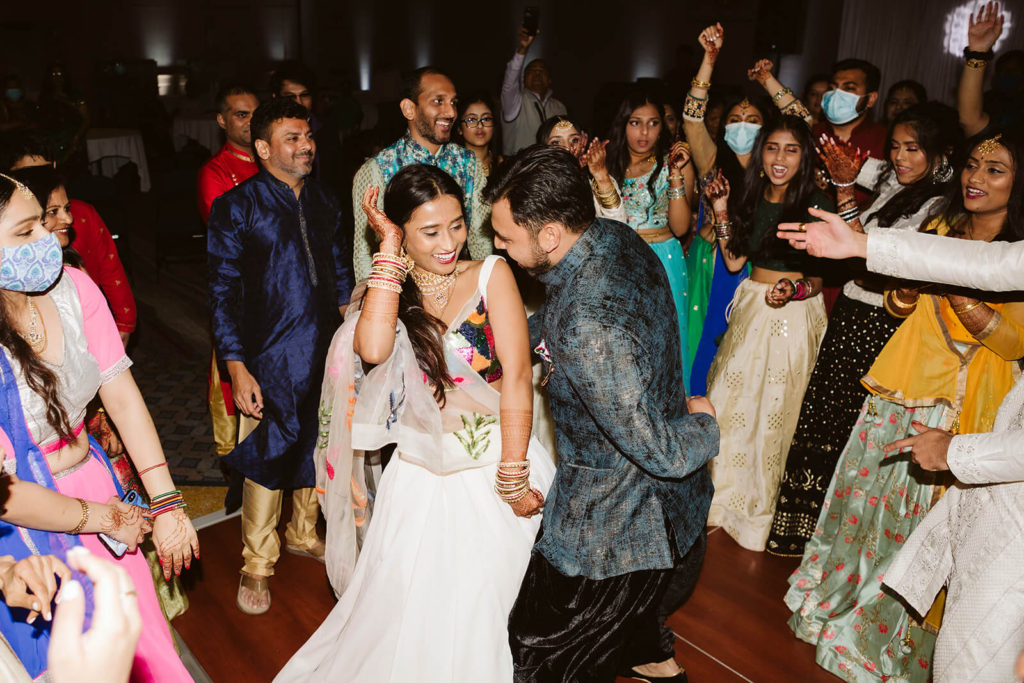
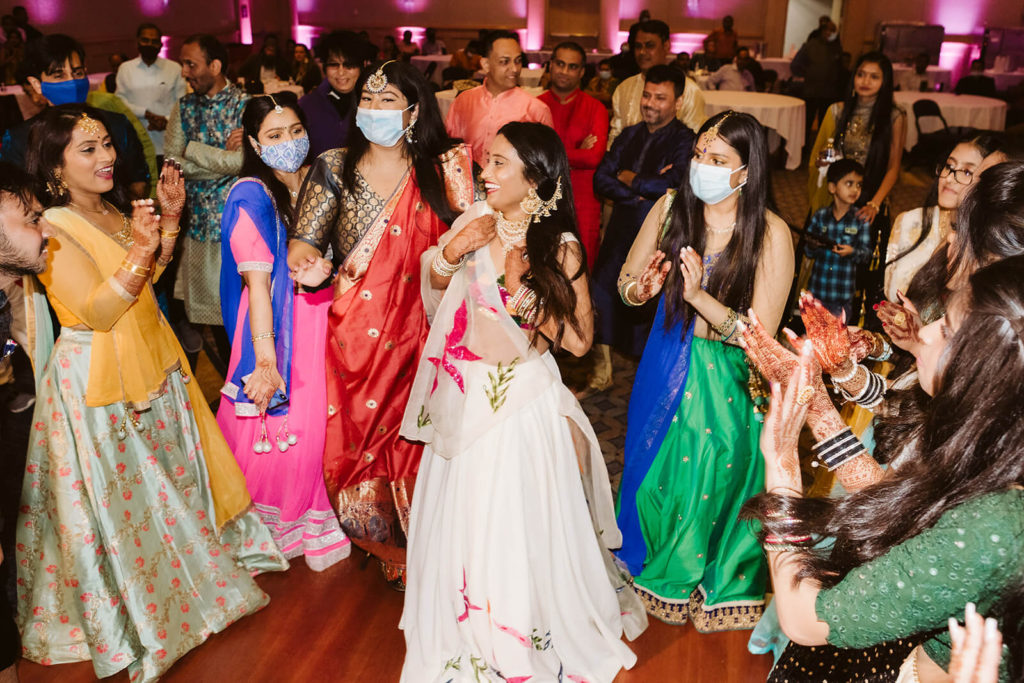

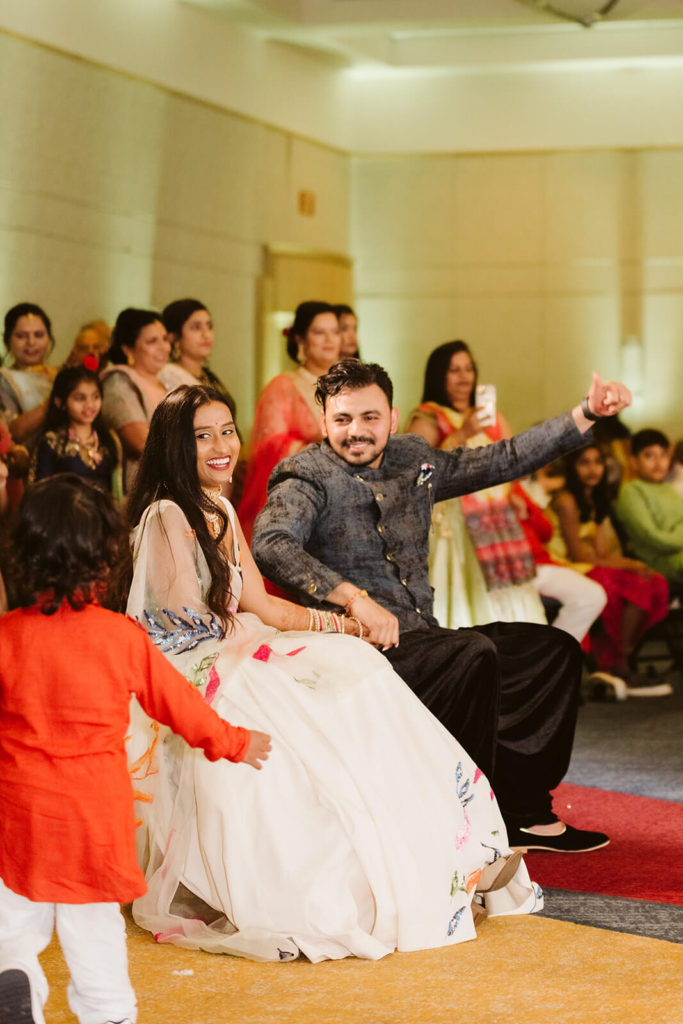
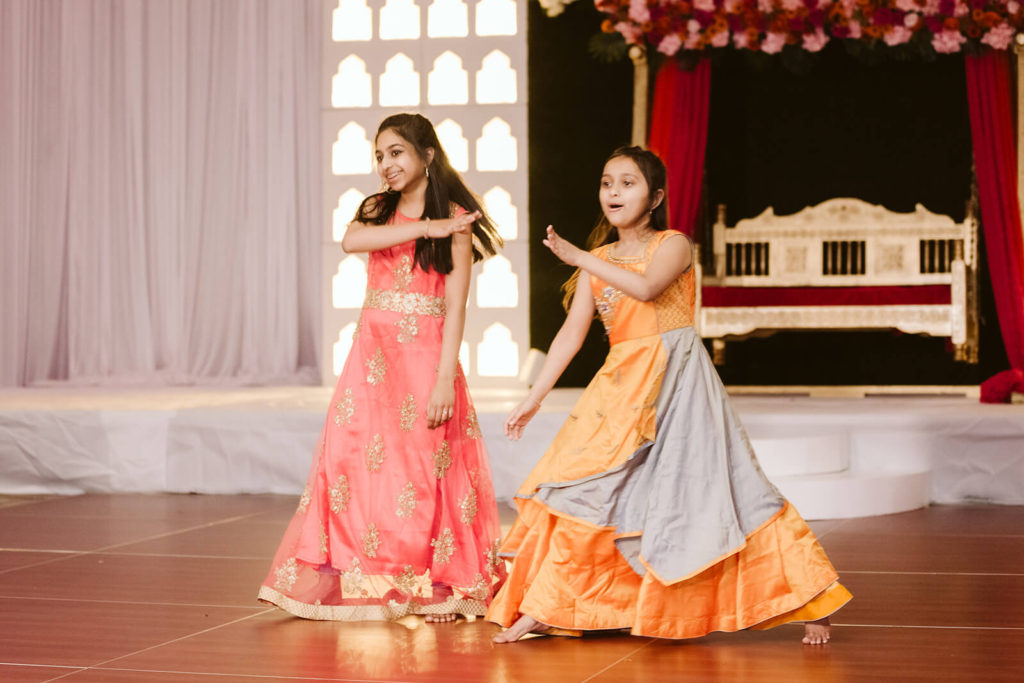
Later that night, Tithi and Sujal met with their families and the rest of their invited guests at the Marriott Downtown Convention Center. There they took some daytime couples’ shots together before meeting their guests for rehearsal dinner. Their rehearsal dinner was a part of the traditional pre-wedding celebration called a sangeet. Sangeet literally means “sung together,” which is fitting as the ceremony consists of family and friends singing, dancing, and performing the night away. Each side of the family performs a folk song to welcome the other, but almost everyone ends up performing at some point over the course of the night. This is just the first of many wildly fun Indian wedding traditions!
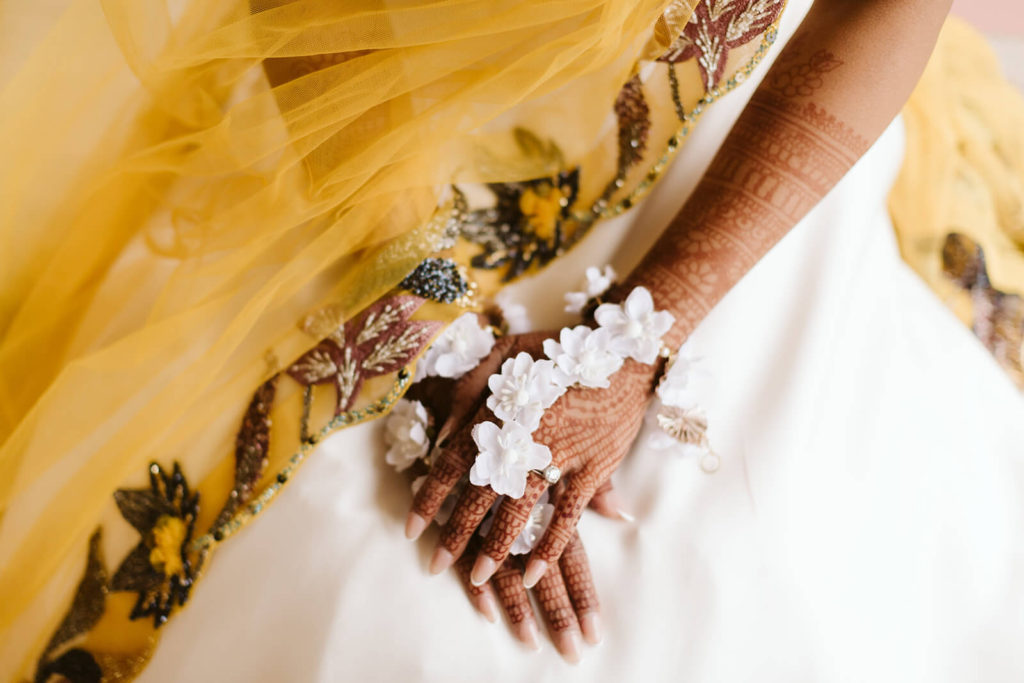
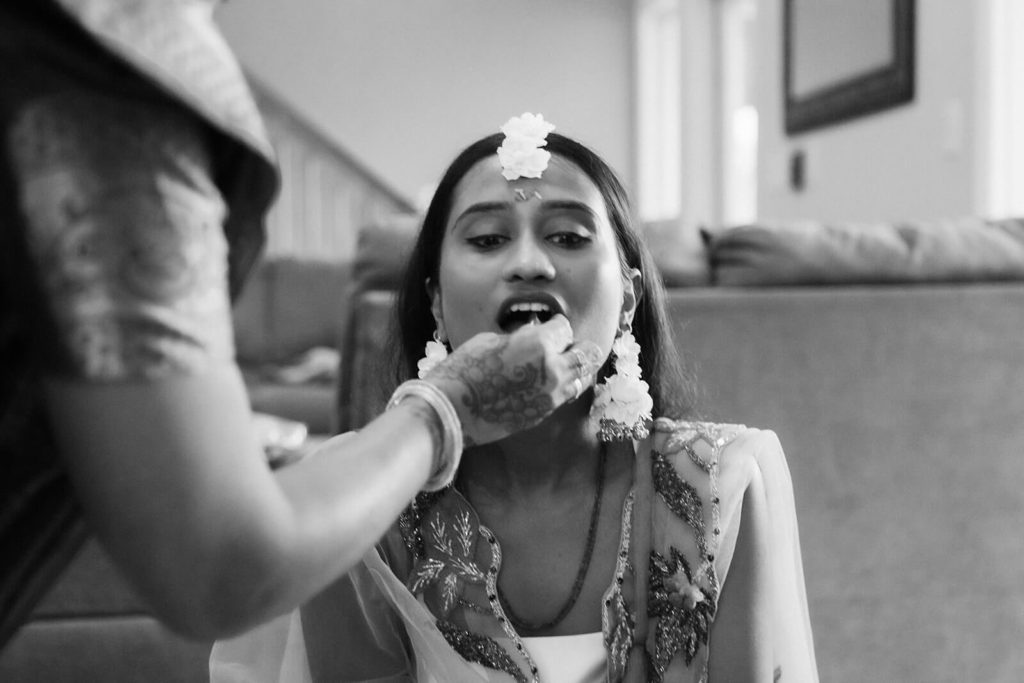
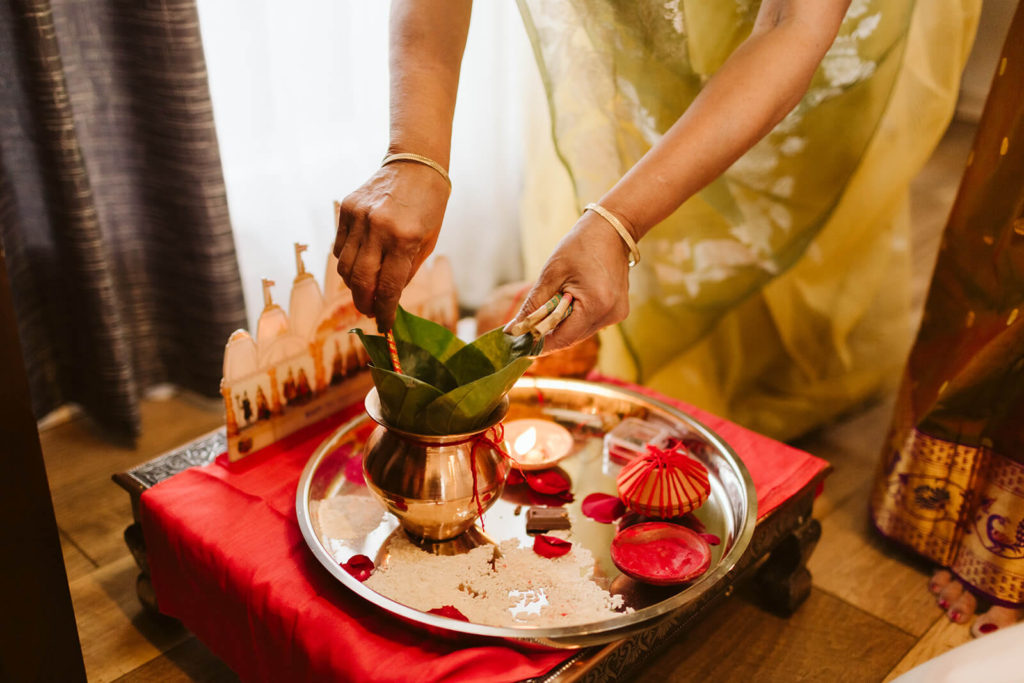
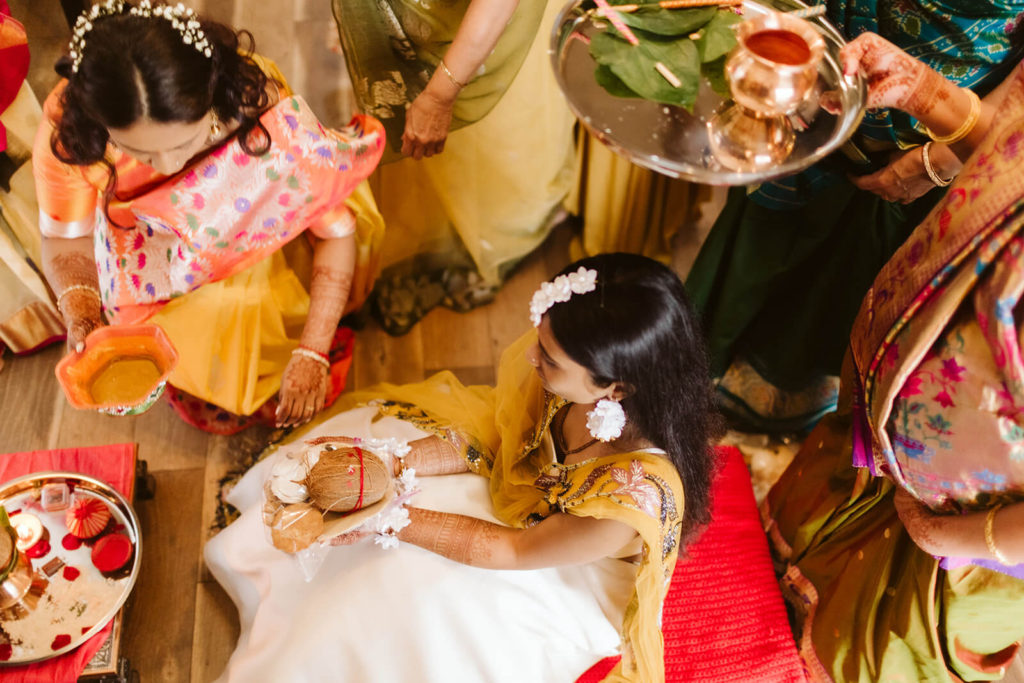
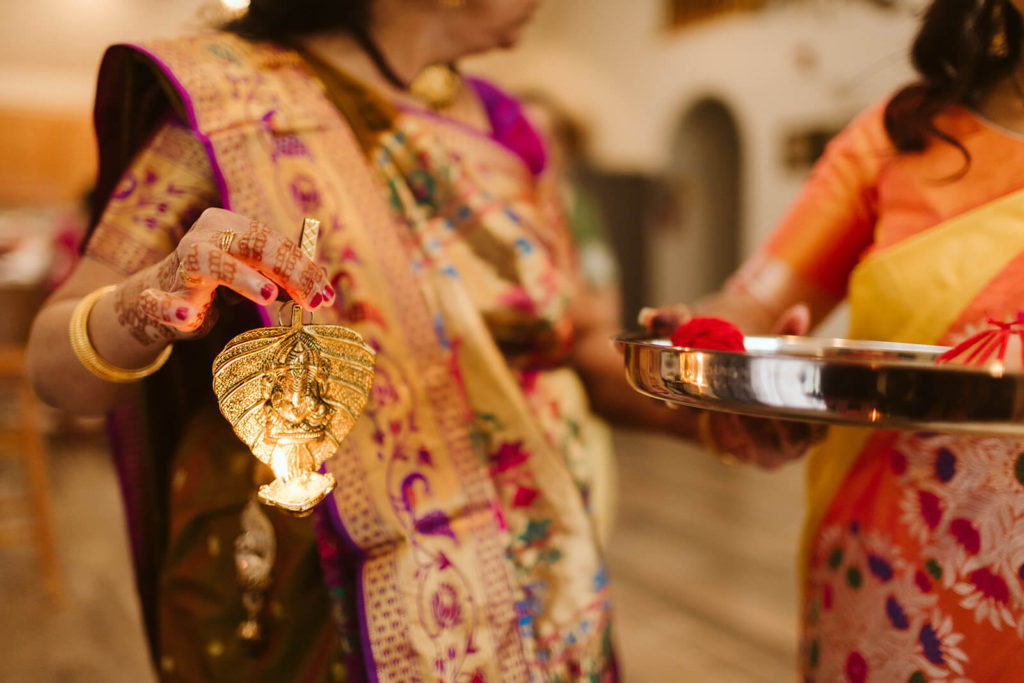
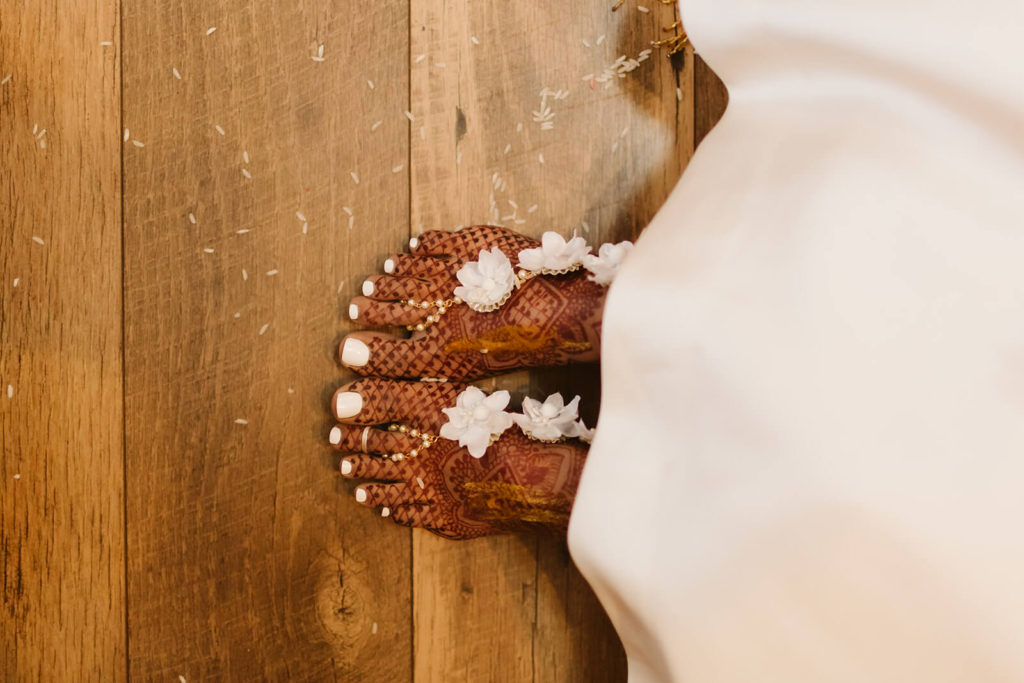

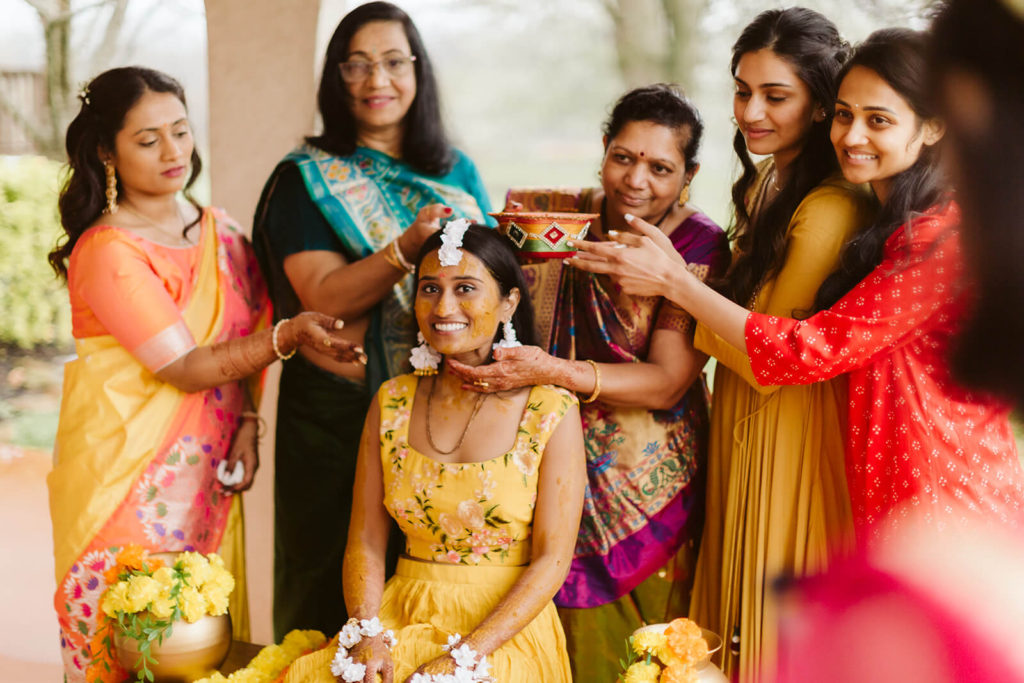
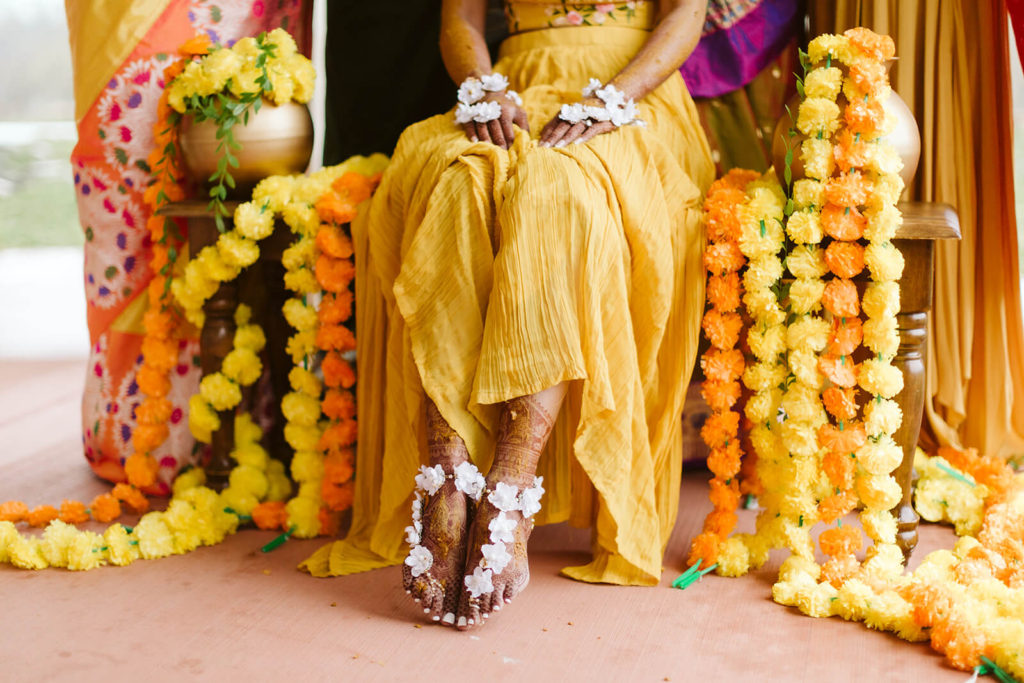



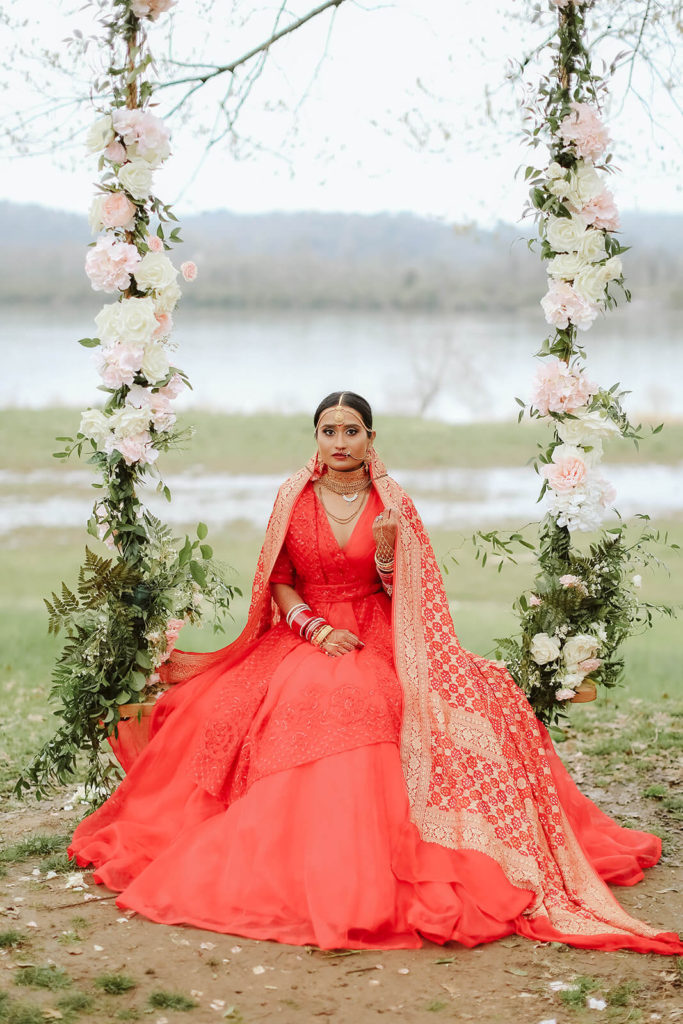
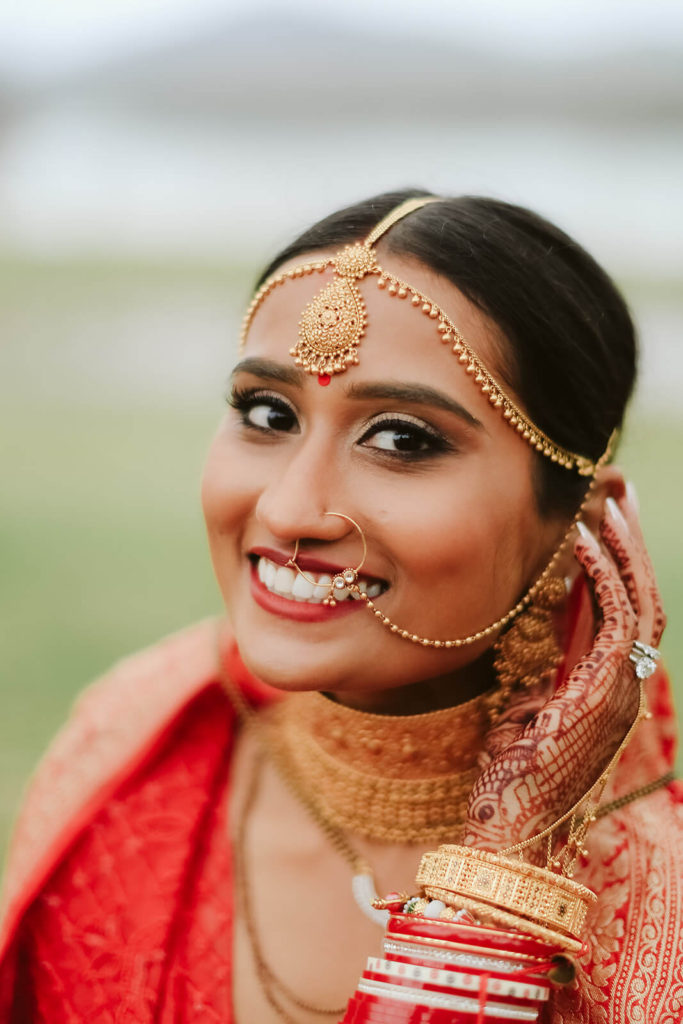
Traditional, Early Morning Preparations with the Bride
Early the following morning, we met Tithi at the Tennessee Riverplace where she was beginning her preparations for her big day. Tithi was gathered with her female relatives where they performed the Pithi ceremony. Although the Pithi ceremony is usually done alongside the Vidhi, the bride and groom are not allowed to see each other afterwards. Tithi chose to postpone hers to the next morning so she was able to attend the sangeet!
The Pithi ceremony celebrates a girl having entered into adulthood being ready for marriage. A yellow paste made primarily of turmeric is blended with perfumes, chickpea flour, herbs, and rosewater for the bride. This is normally done by one of the groom’s aunts and then the mixture is arranged on a platter to be blessed by the priest.
As she had already undergone the mehndi ceremony a few days prior where intricate designs in henna were applied to her skin, Tithi sat on a low stool waiting as the pithi was prepared for her. The blend was applied to her face and certain parts of her body to cleanse her skin for her wedding. It’s almost like having a facial planned into your preparations!
After the ceremony was over, the ladies of Tithi’s family helped her clean up and dress for the main portion of the ceremony. Unlike typical American weddings, Indian brides wear red, with Tithi’s gown being a vibrant shade with intricate floral embroidery. Did you know red symbolizes the commitment and fertility of a bride as she enters into marriage?
When Tithi was dressed, the ladies headed outside to the lawn for guest portraits while waiting for Sujal’s arrival.


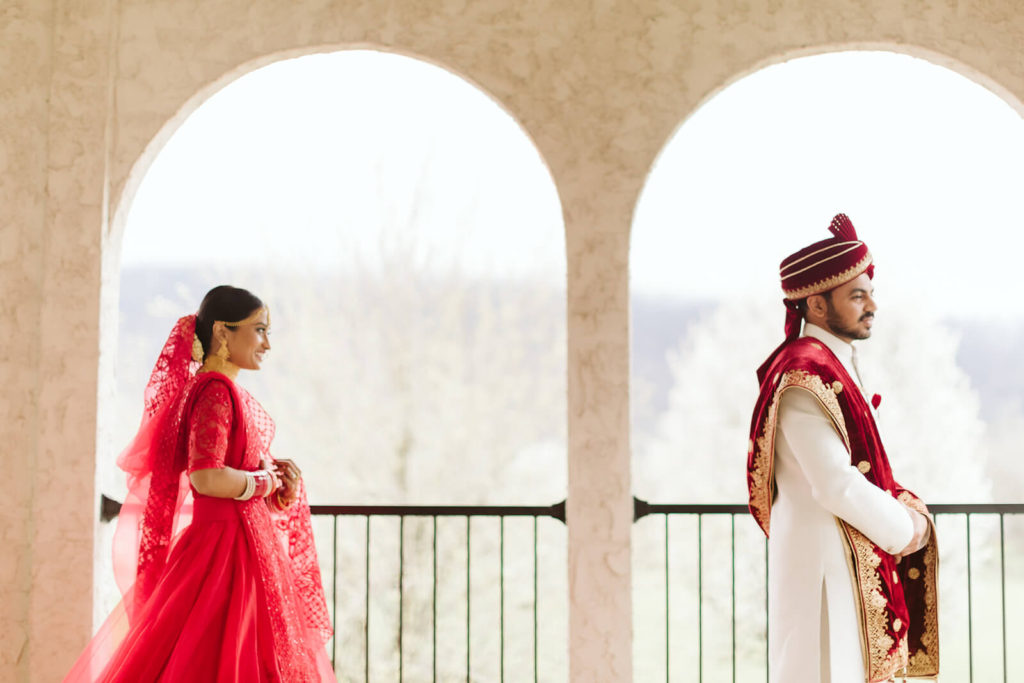
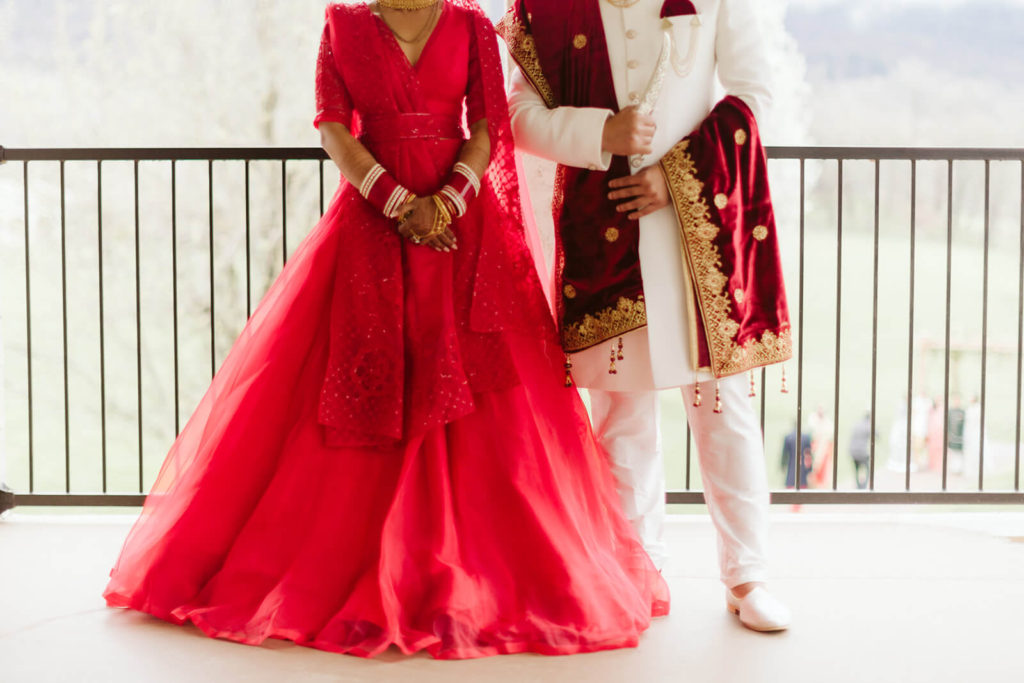

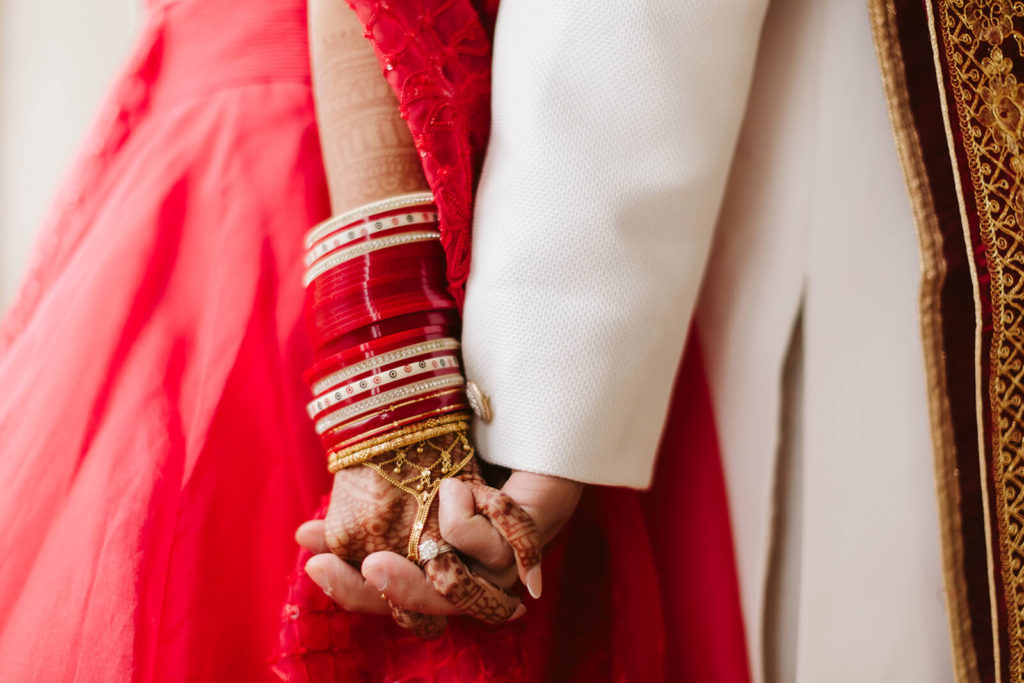
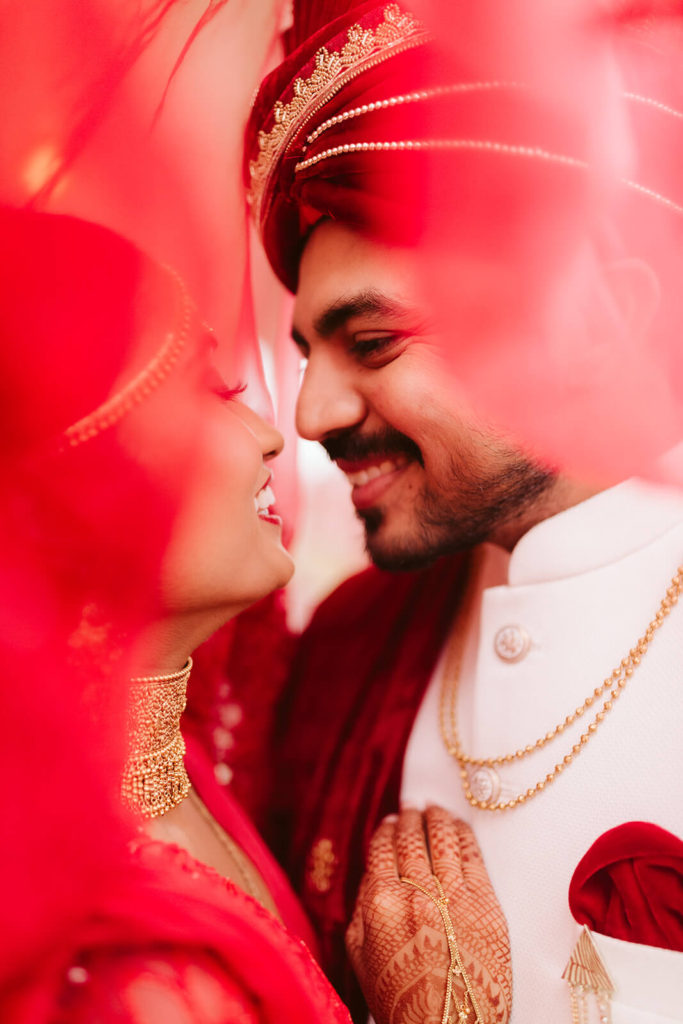

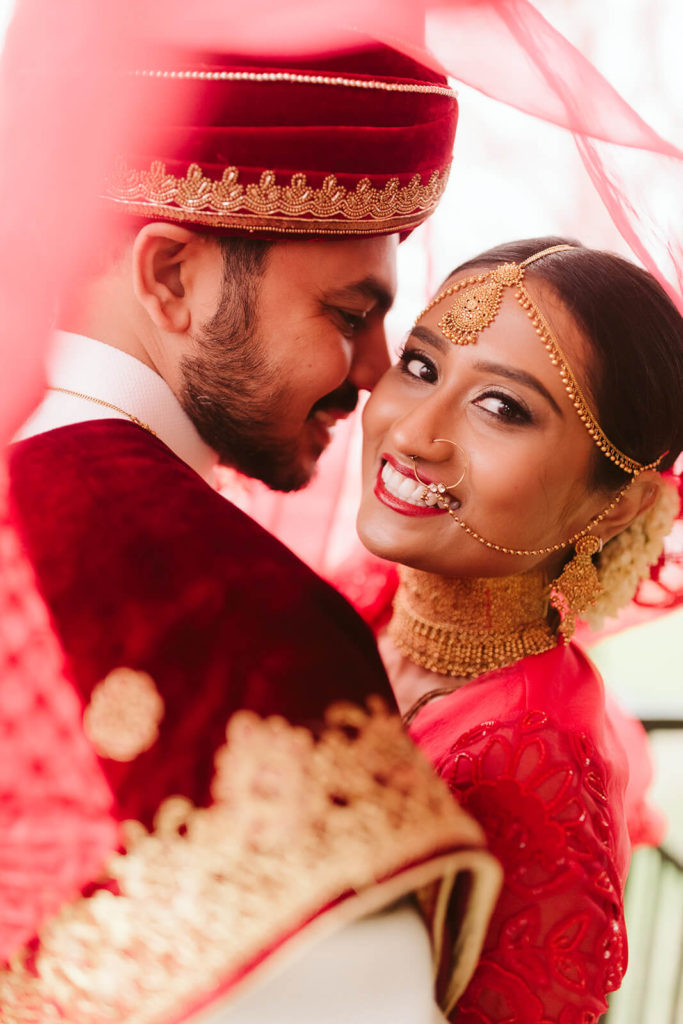
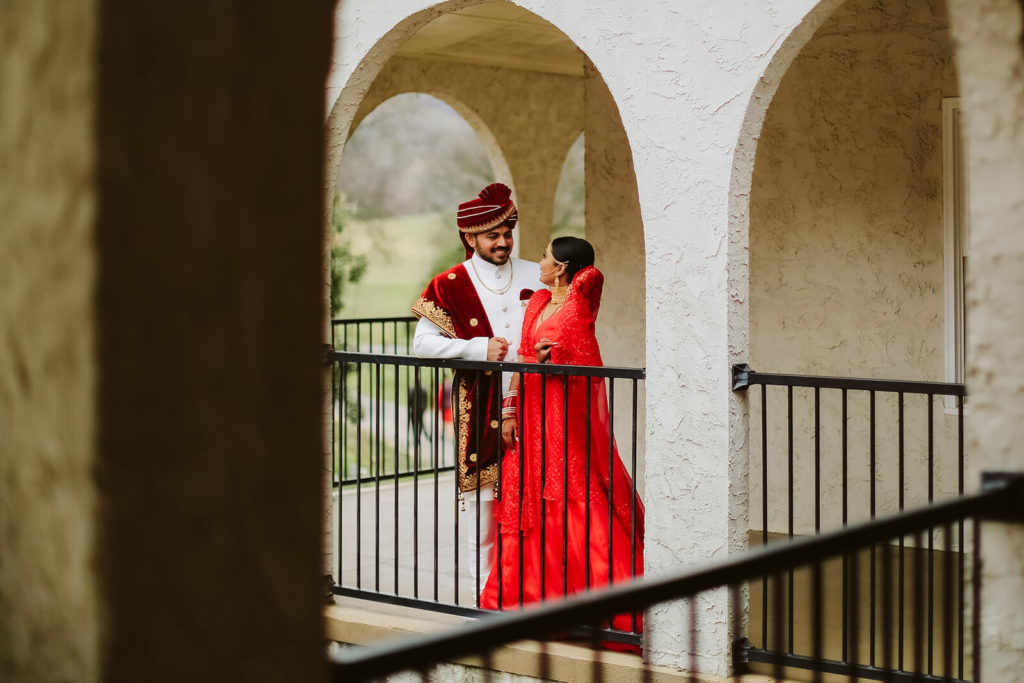

Breaking Tradition for a First Look
Tithi and Sujal chose to deviate from tradition just a tiny bit, in order to take first look pictures. I met Sujal on an alcove of the mansion’s balcony to take groom photos before Tithi arrived. Sujal looked pensive and stately as he leaned against the balcony rail and looked over the grounds. Indian tradition calls for the groom to resemble a king on the day of his wedding and Sujal certainly fit the part! He wore a traditional white sherwani with a stole and turban that complemented the rich color of Tithi’s gown.
Tithi arrived, ascending the stairs leading to the alcove where Sujal stood, and the moment Sujal turned to greet her, he couldn’t help but smile at his beautiful bride.
Fun fact: public displays of affection, a.k.a PDA, is regarded as disrespectful in Indian culture. So we were cautious to be respectful of this cultural tradition by finding creative and unique ways to pose the couple for photos while still showing this love and affection for each other.
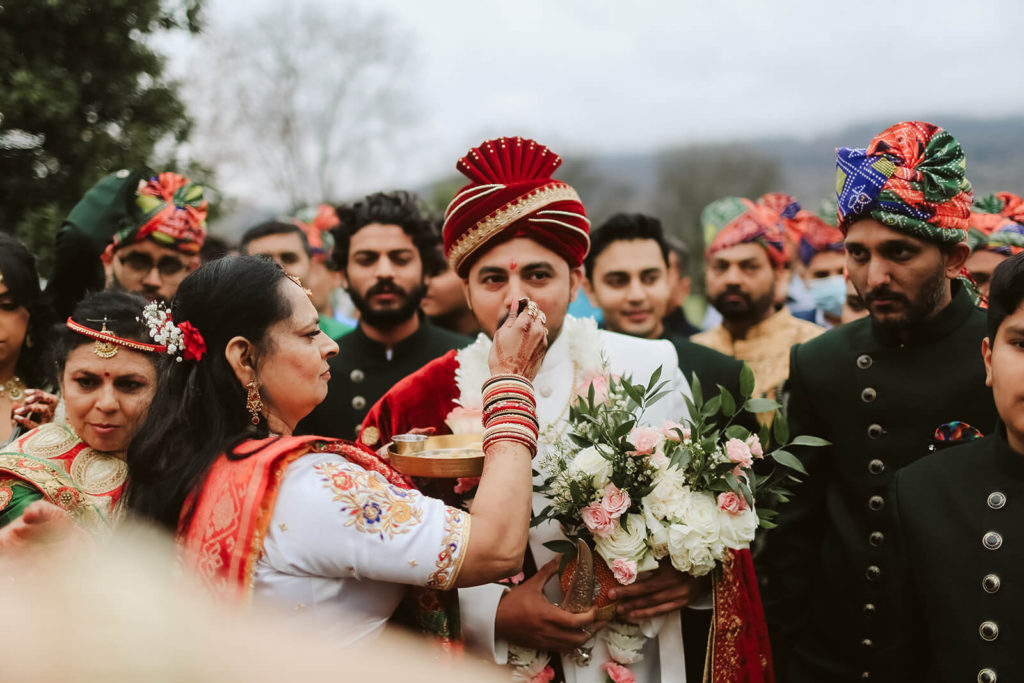
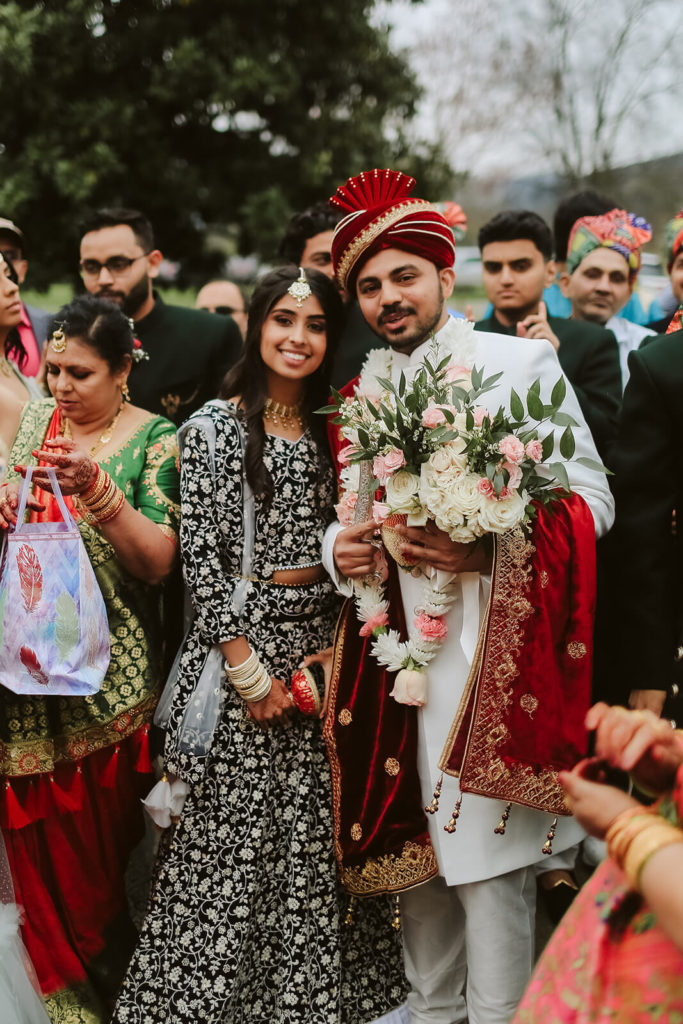
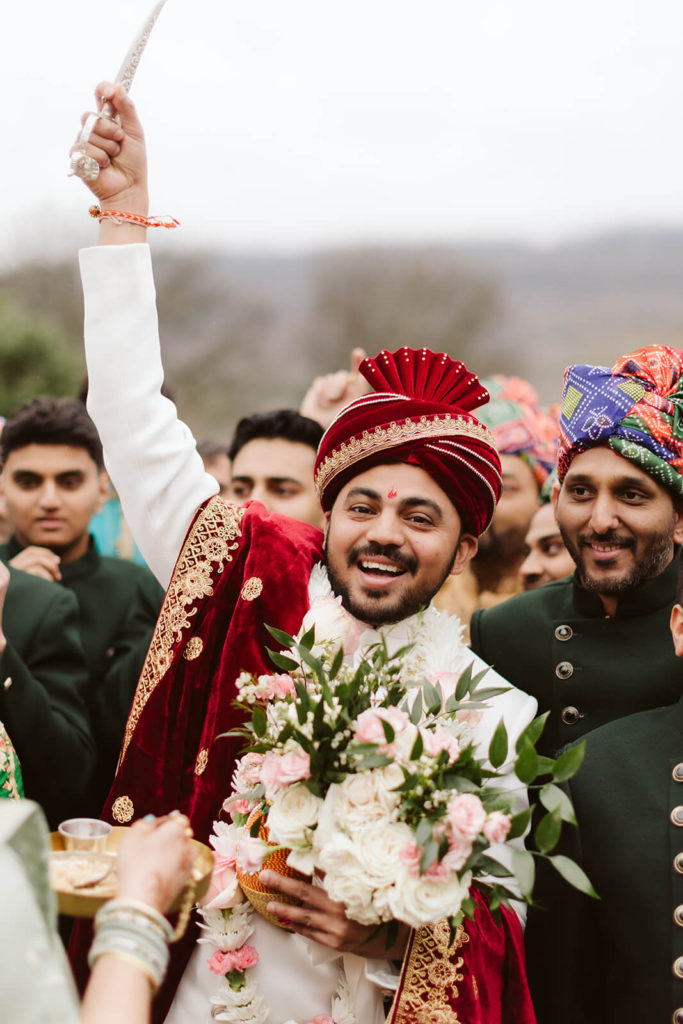
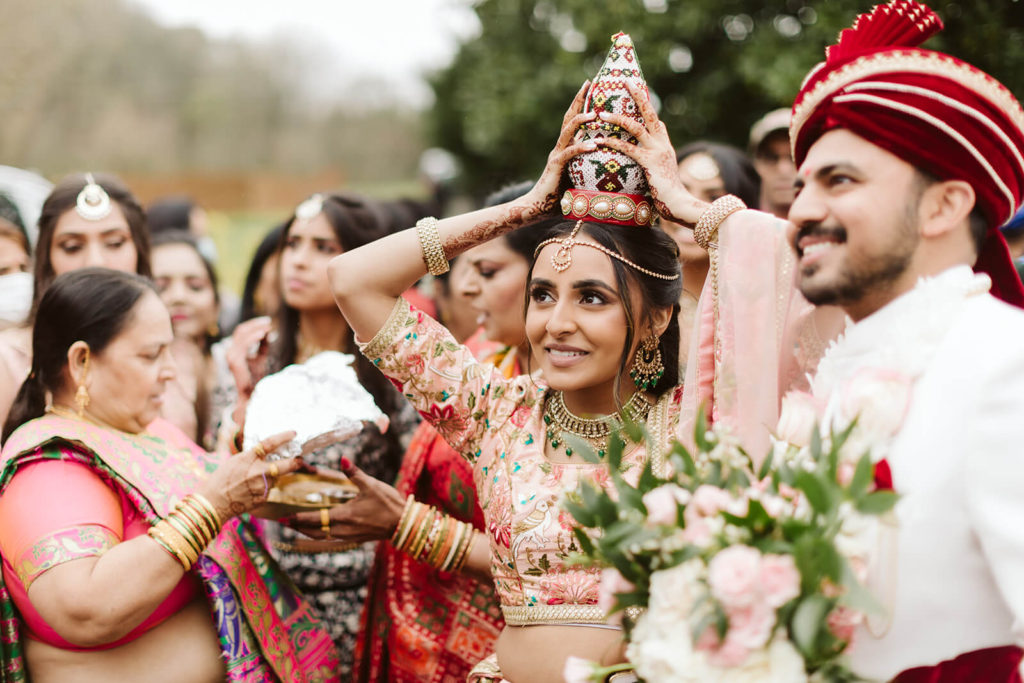
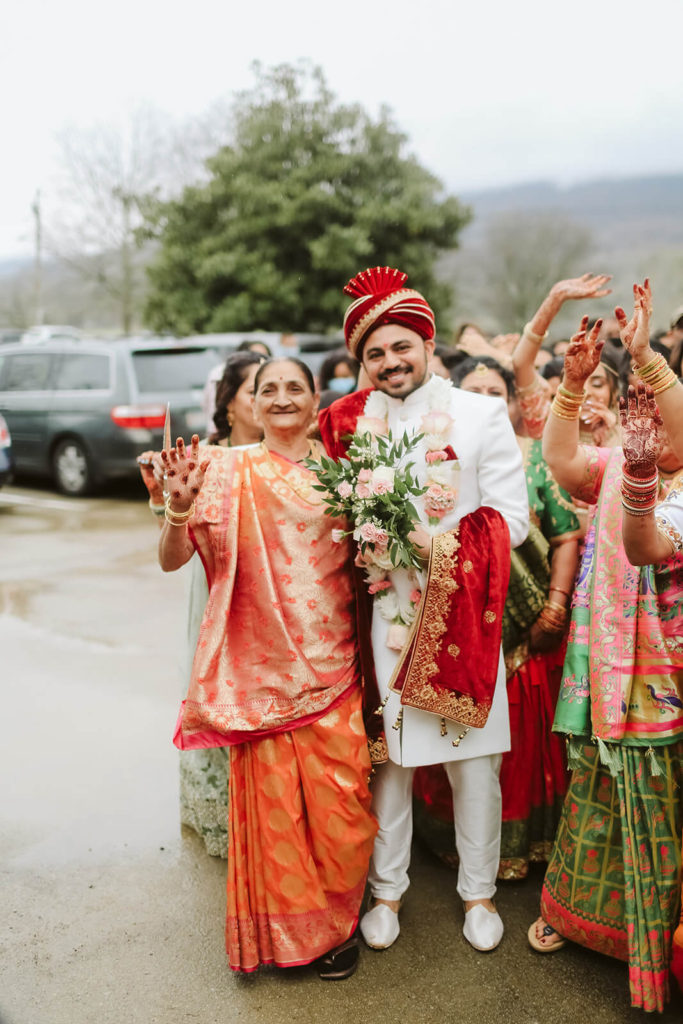
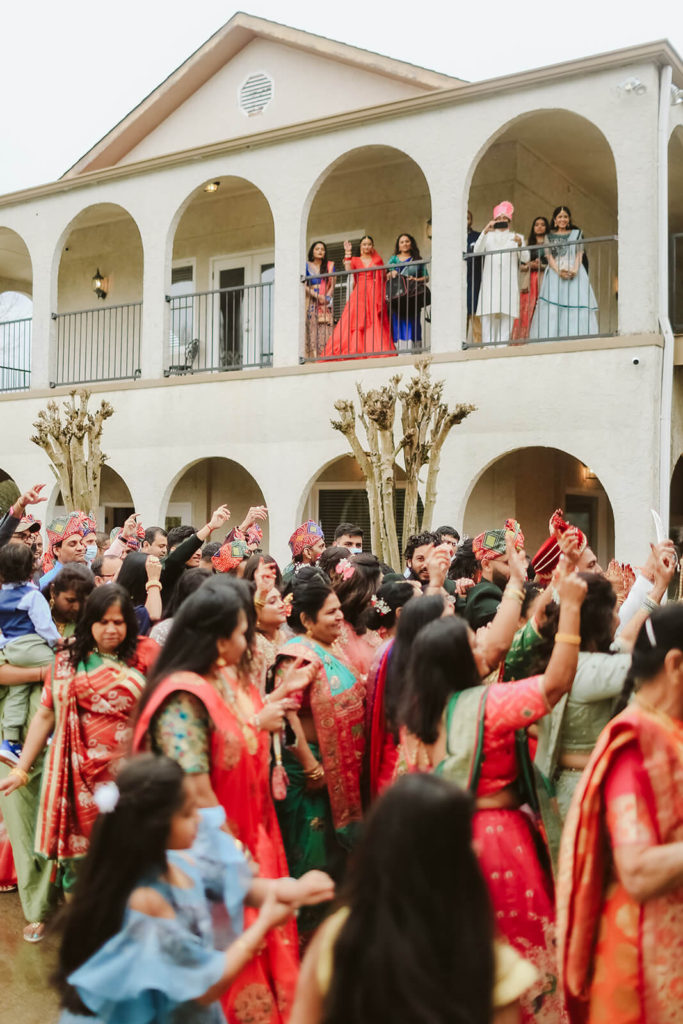
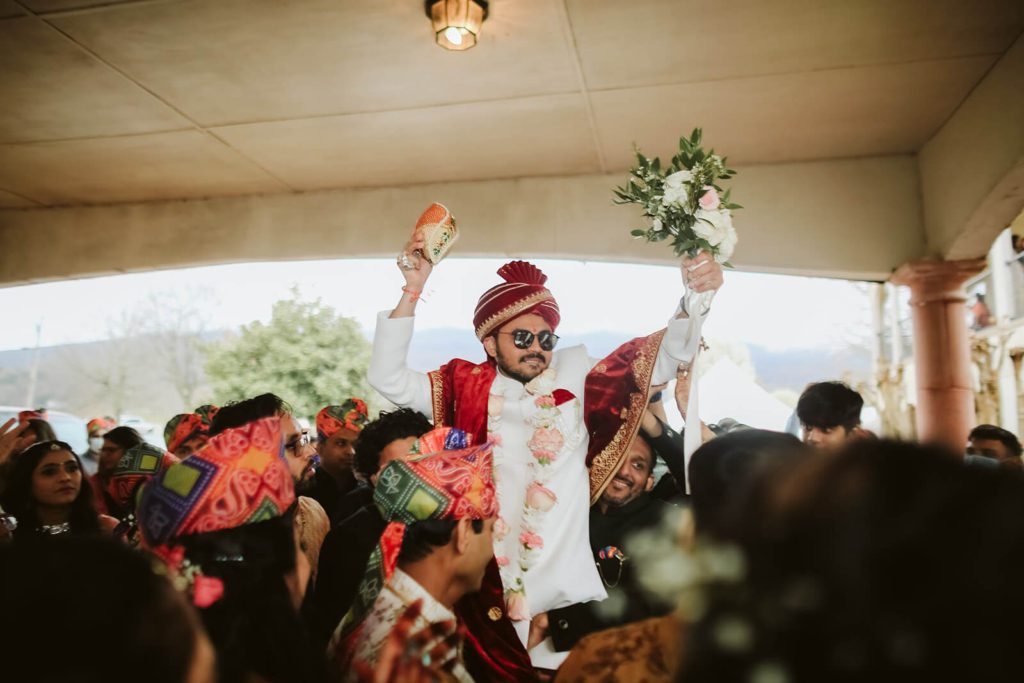
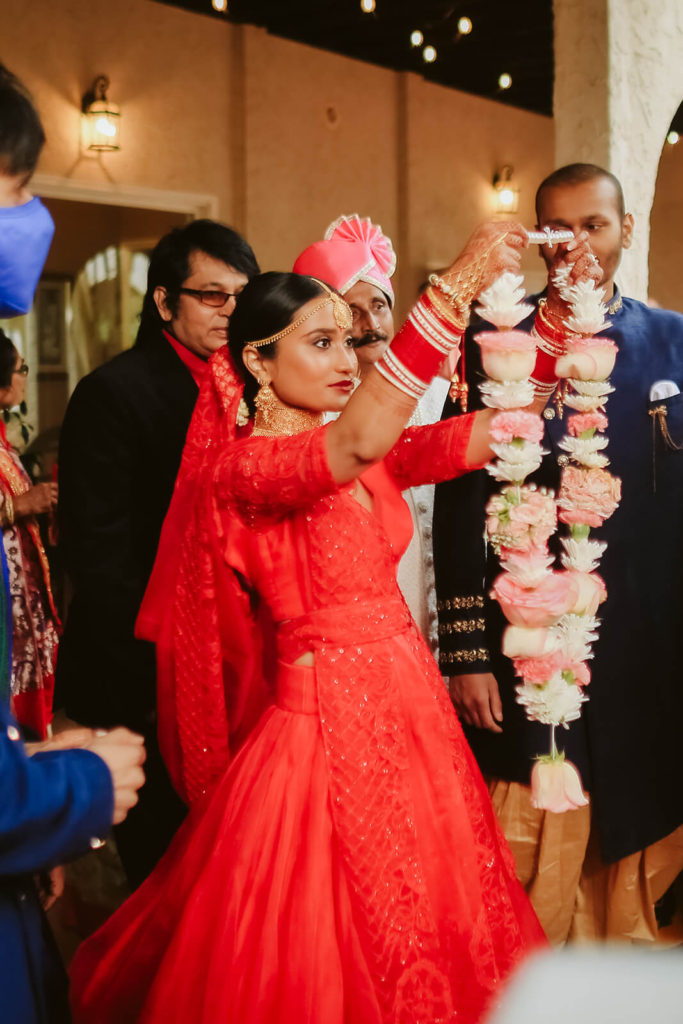
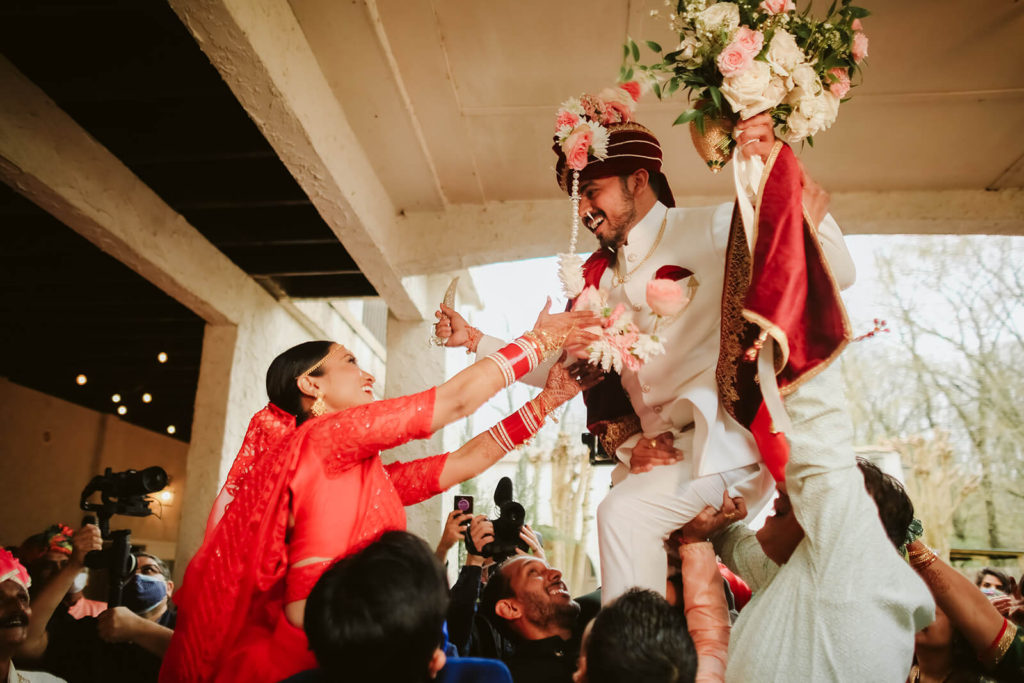
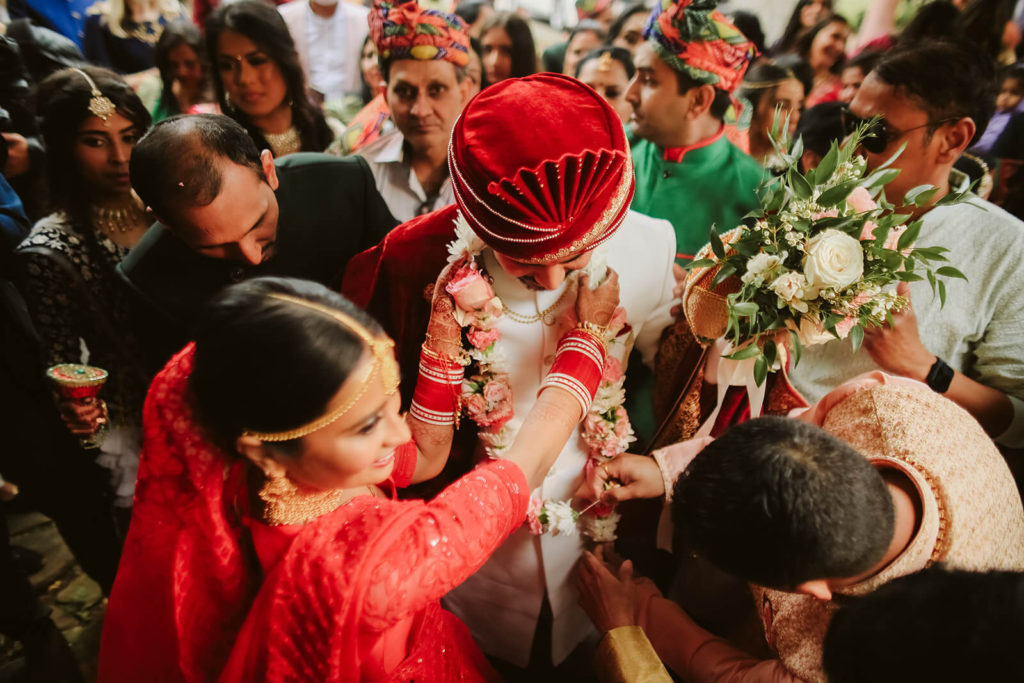
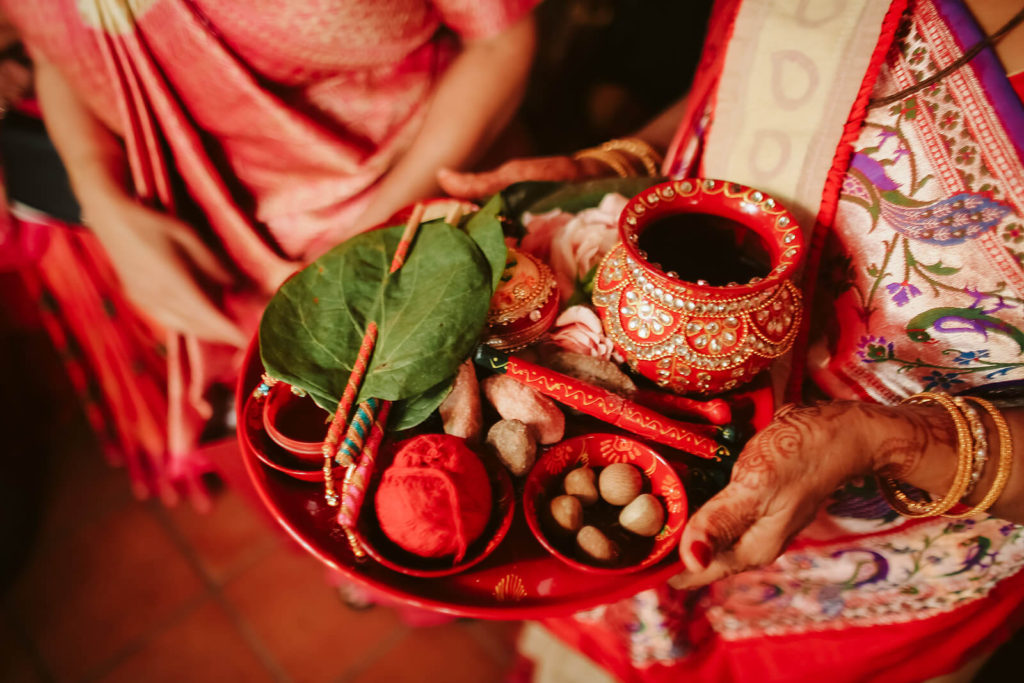
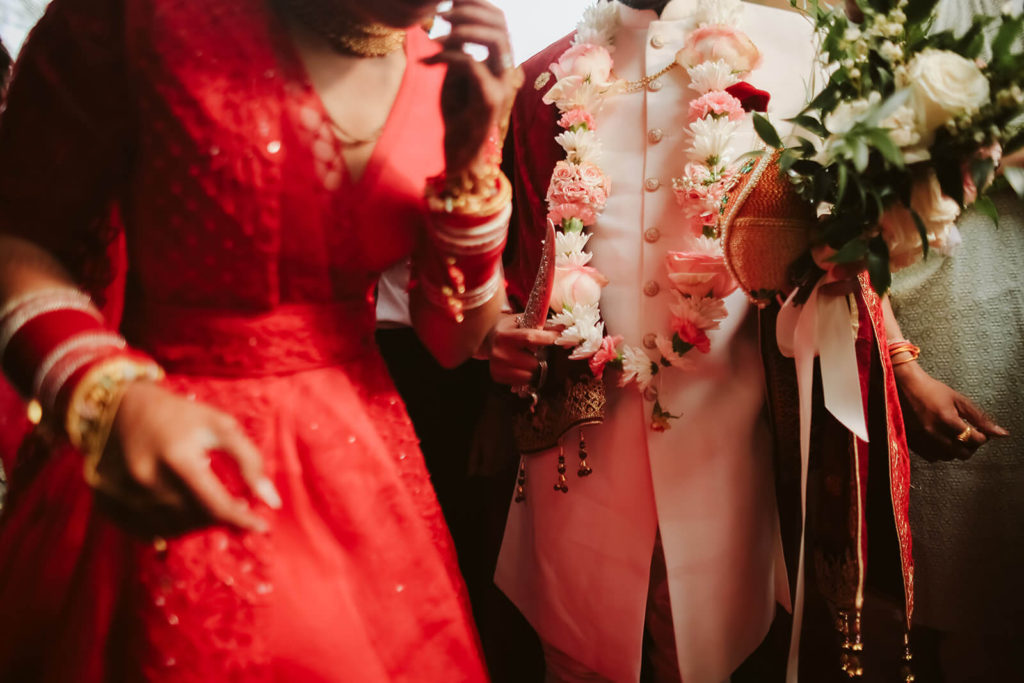
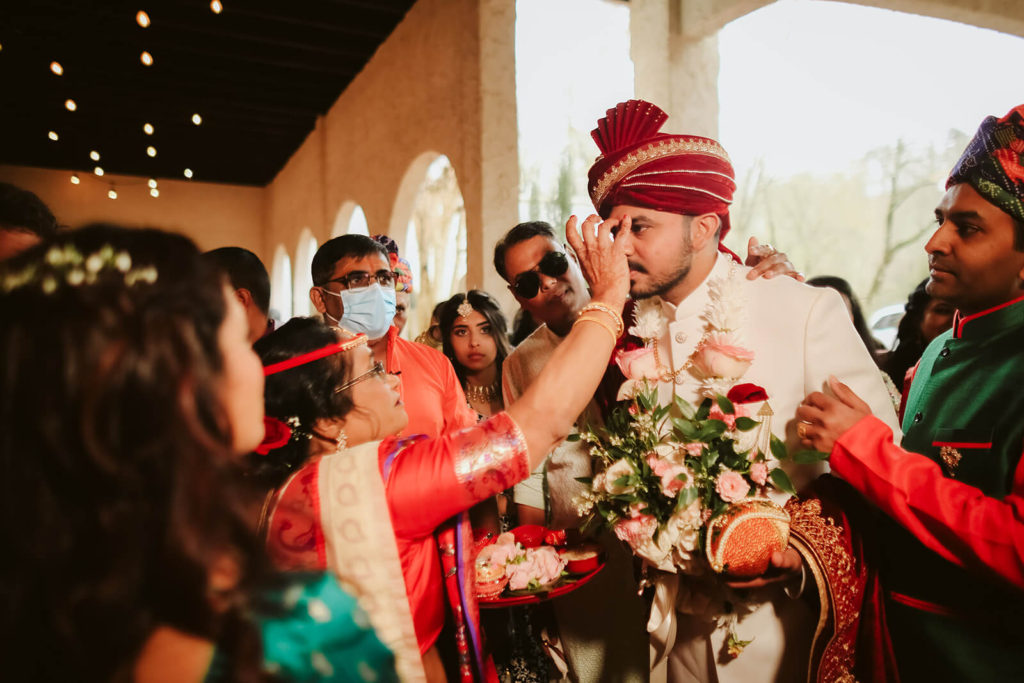
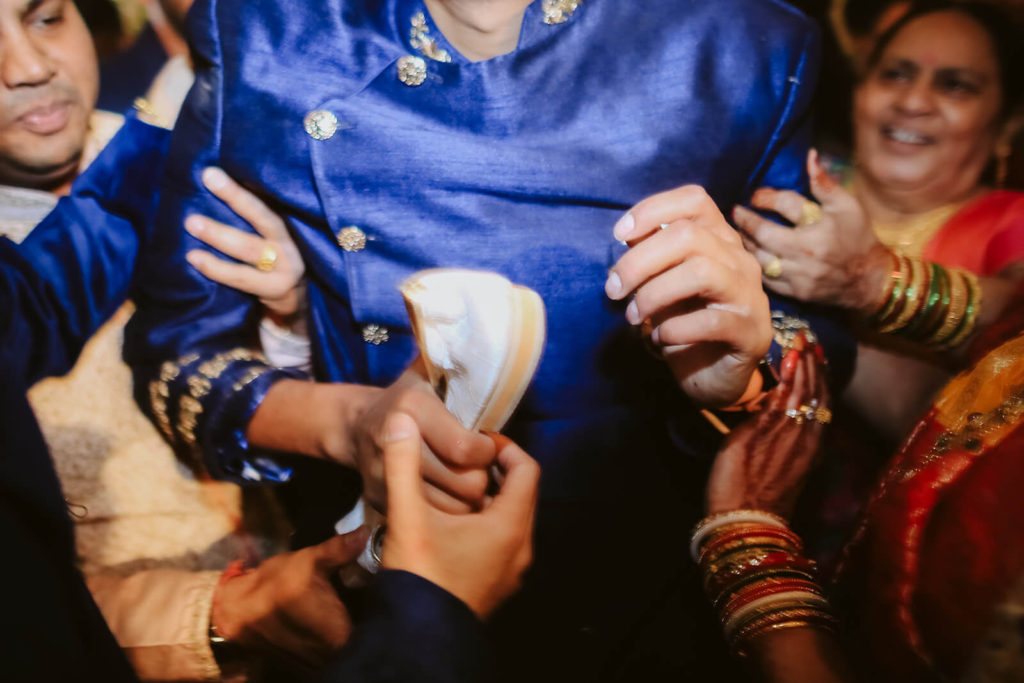

Celebrating the Groom’s Arrival
Traditionally, when the groom arrives at the ceremony site, he is met with complete pomp and circumstance in a celebration called baraat. Although Tithi and Sujal had already seen each other, they couldn’t miss out on another opportunity to have fun!
During the baraat, there is a lot of dancing and singing and the groom enters the venue amidst a parade of his loved ones. This acts as the groom’s processional into the wedding ceremony. In the past, the groom rode into the baraat atop a horse or even an elephant! In more modern times, grooms make do with a fancy sports car instead. The baraat is an exciting way for the groom’s family to celebrate him and his new step in life all while accompanying him to the wedding venue.
Tithi and her family watched this joyous procession from the balcony before going down and welcoming Sujal and his entourage. Sujal’s family hoisted him into the air and carried him forward to meet his bride and once placed back on solid ground, Tithi draped a milni, or flower garland, around his neck. Then members of her family anointed his forehead with rosewater and gifted him with Shagun, or lucky tokens, as a symbol of welcome into their family.
From there, Sujal was led towards the mandap where the actual wedding would take place. However, as the mandap is considered a holy place during the ceremony, he had to remove his shoes before entering. This fact led to an entirely amusing game where Sujal’s shoes were stolen from him and wouldn’t be returned until later in the day!
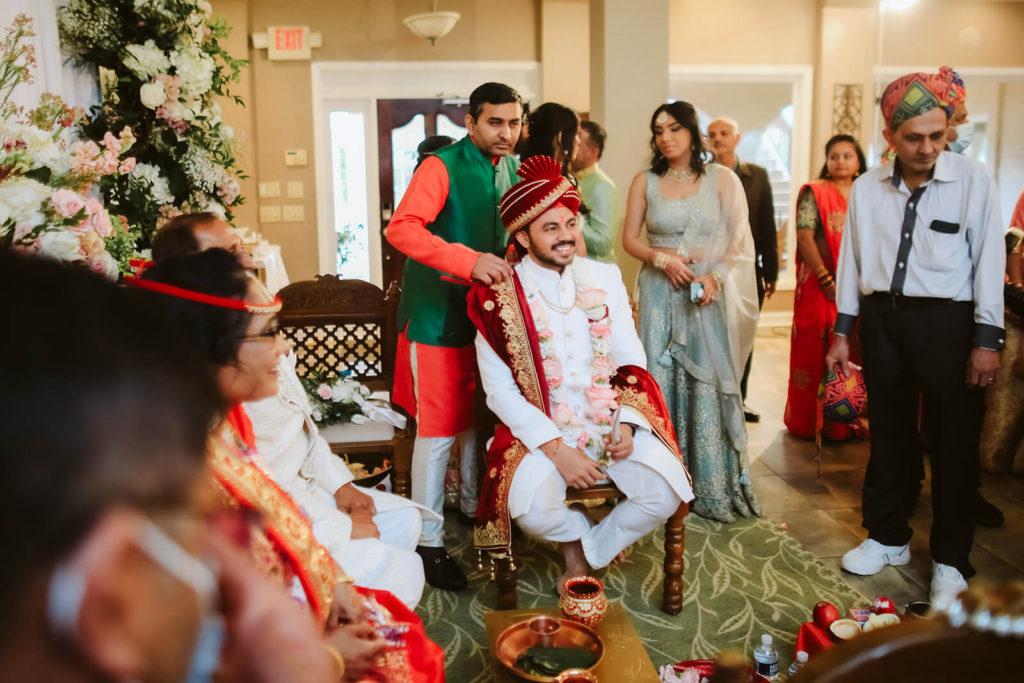
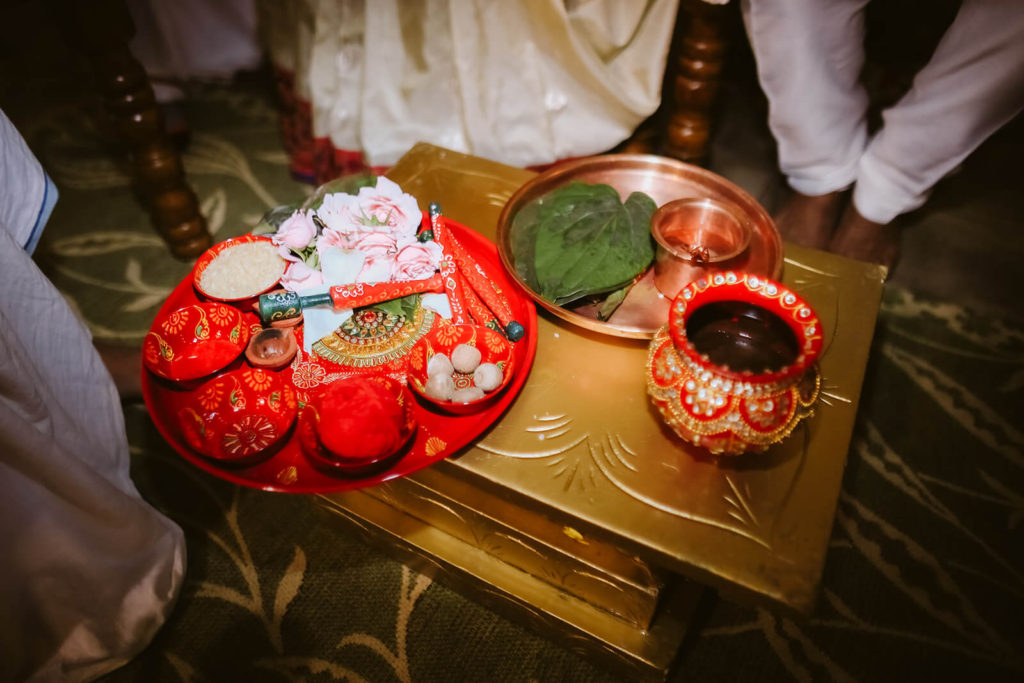

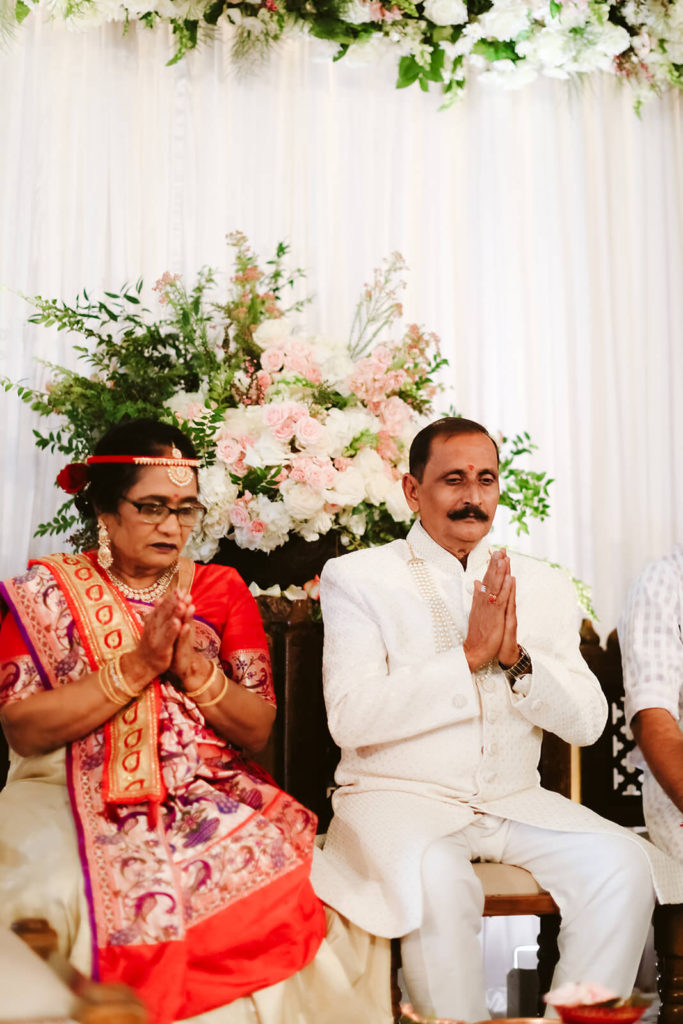
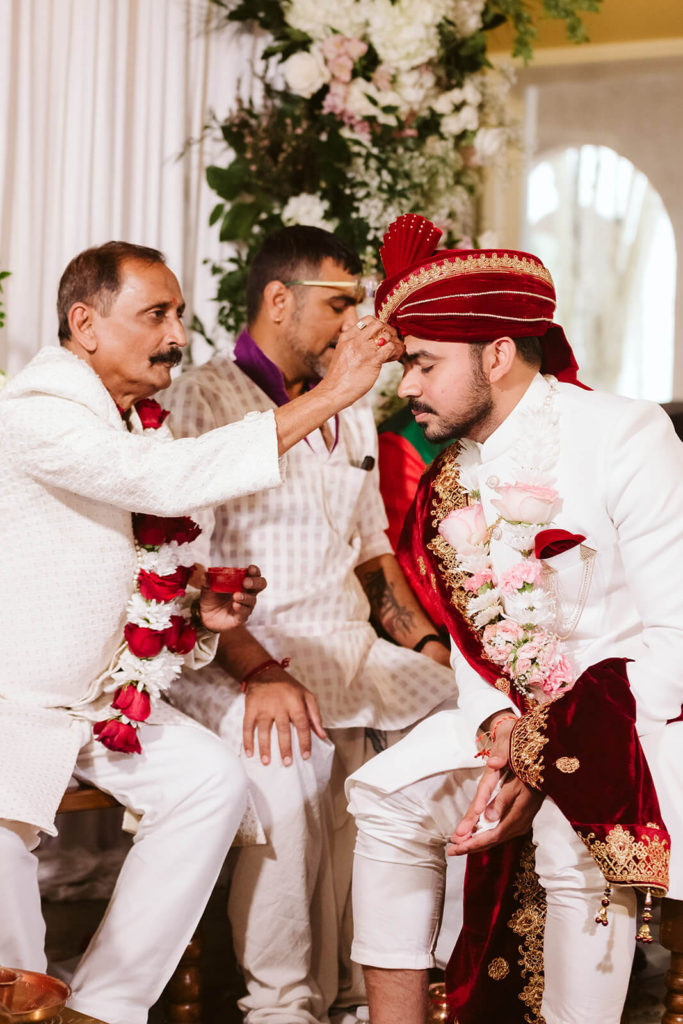
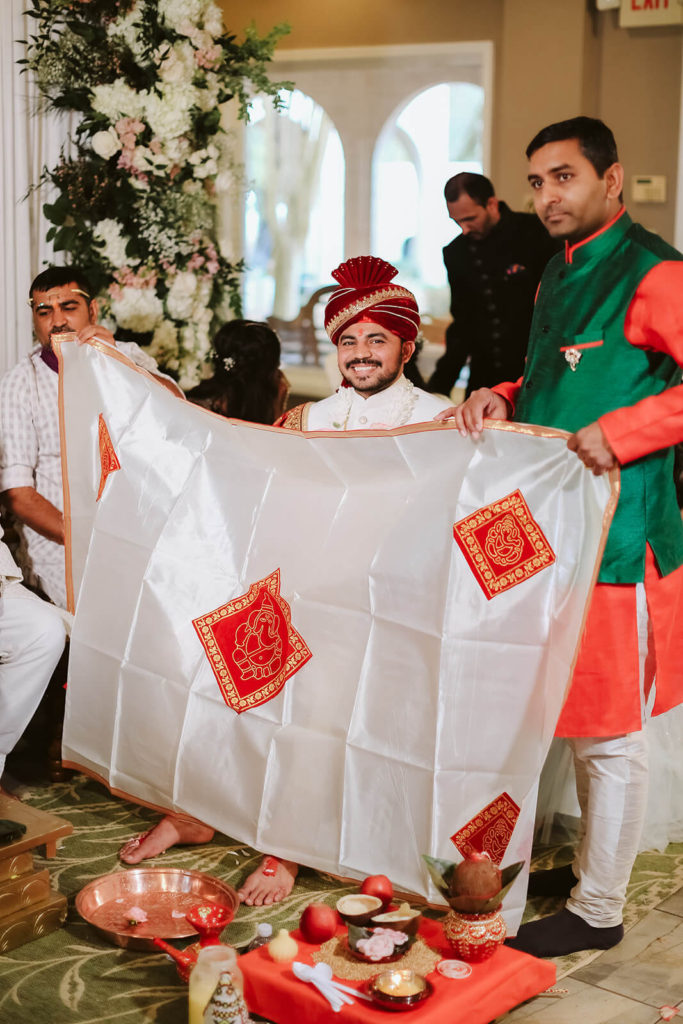
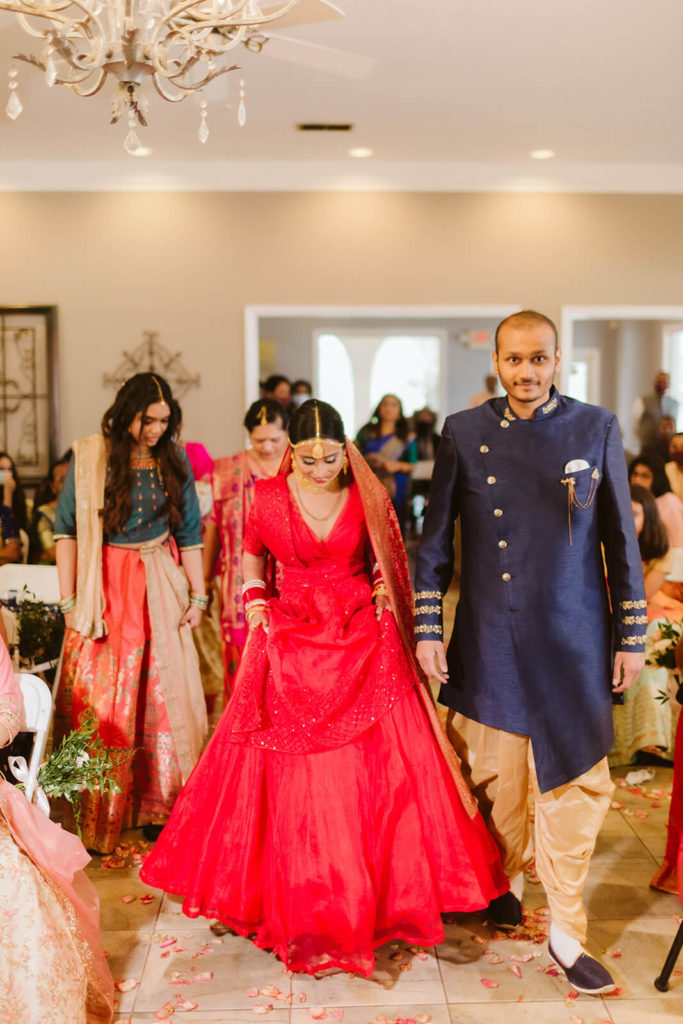
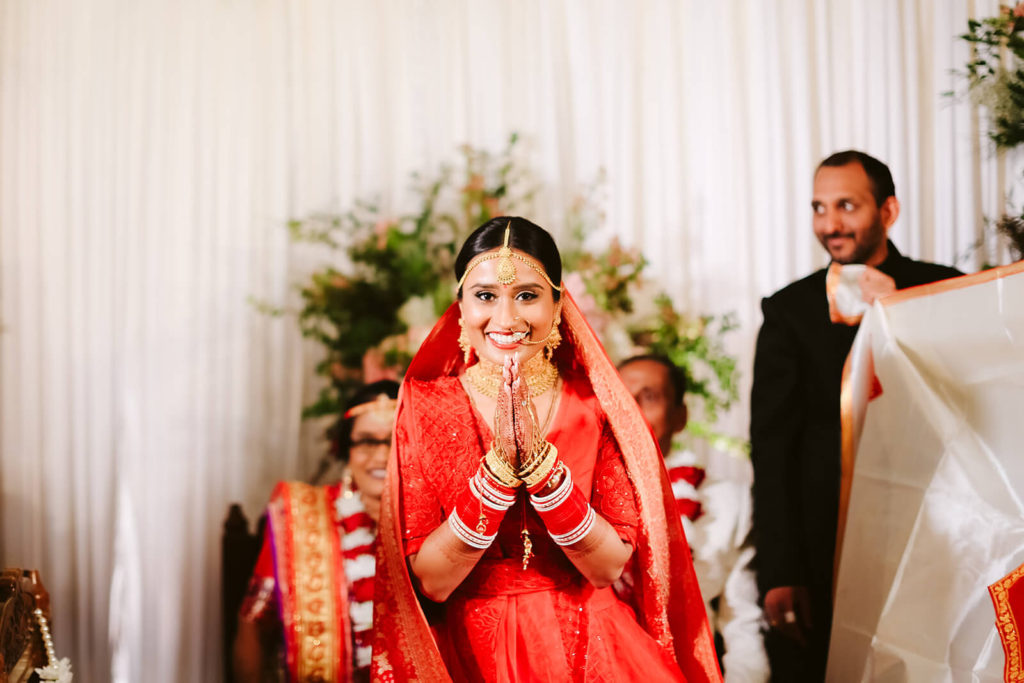
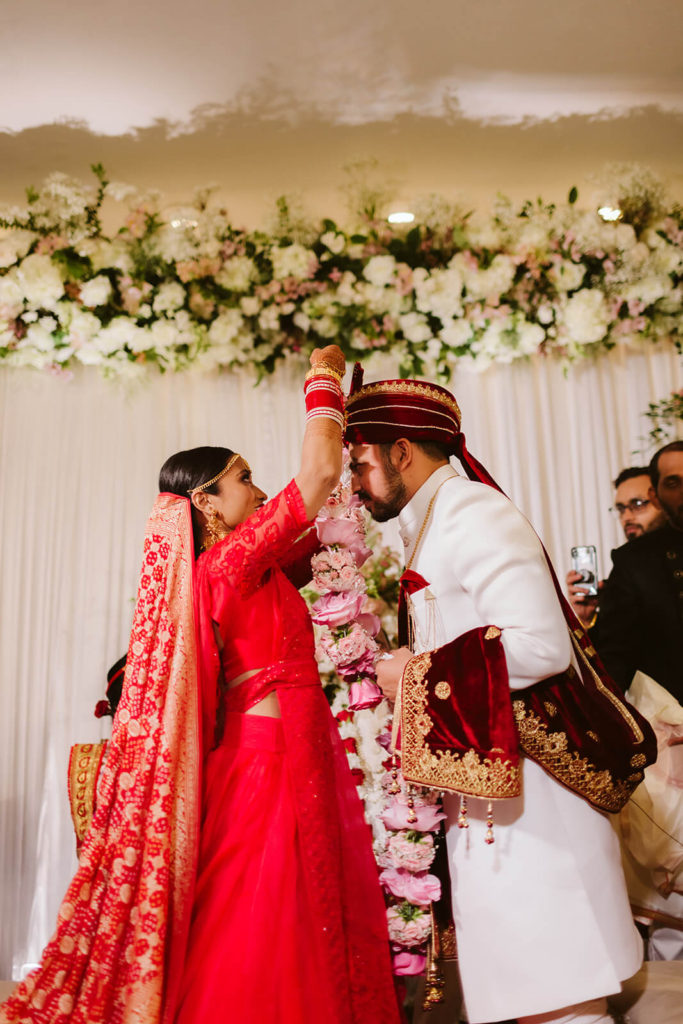
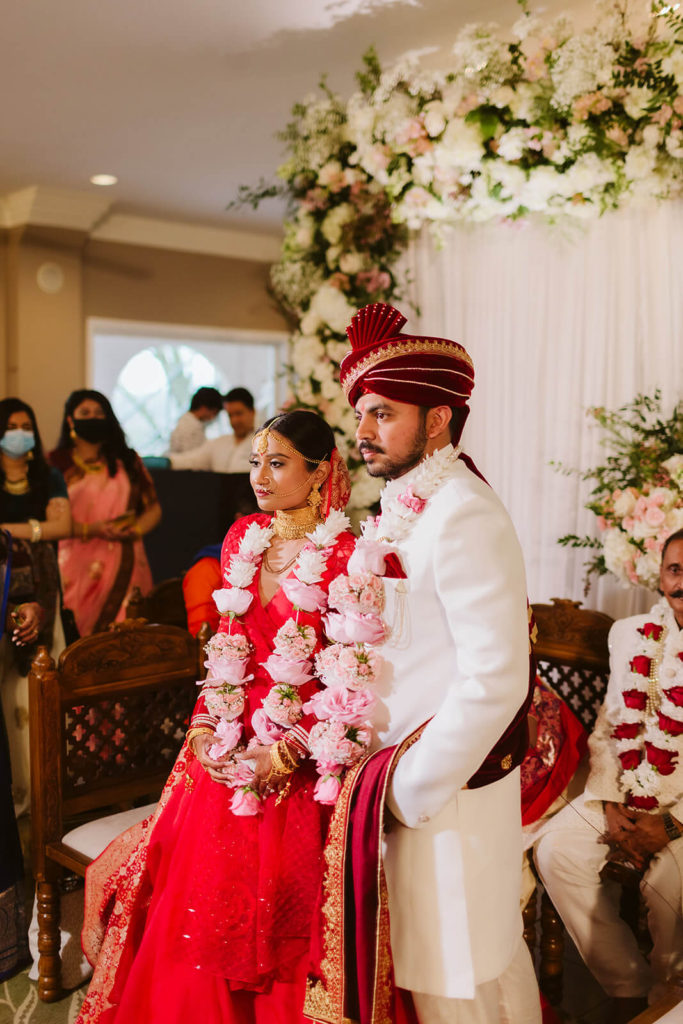
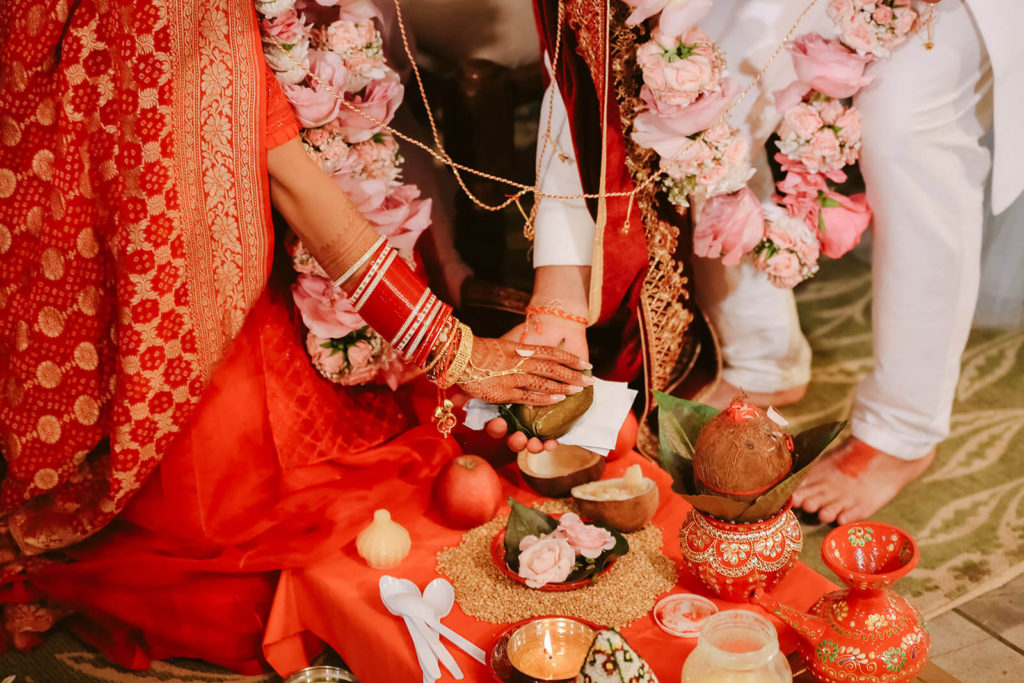

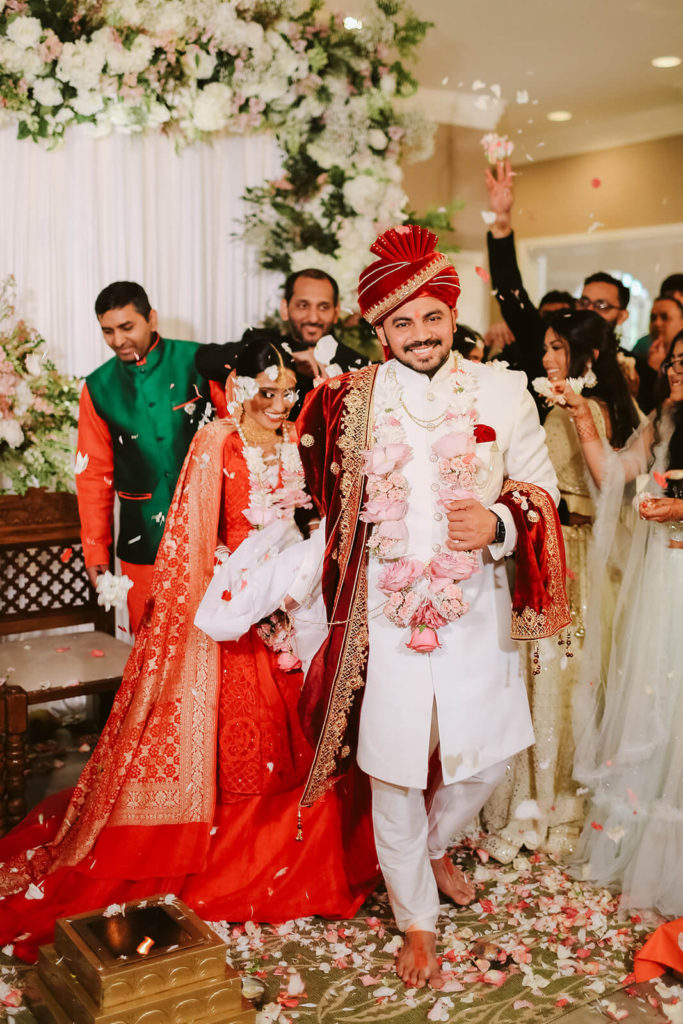
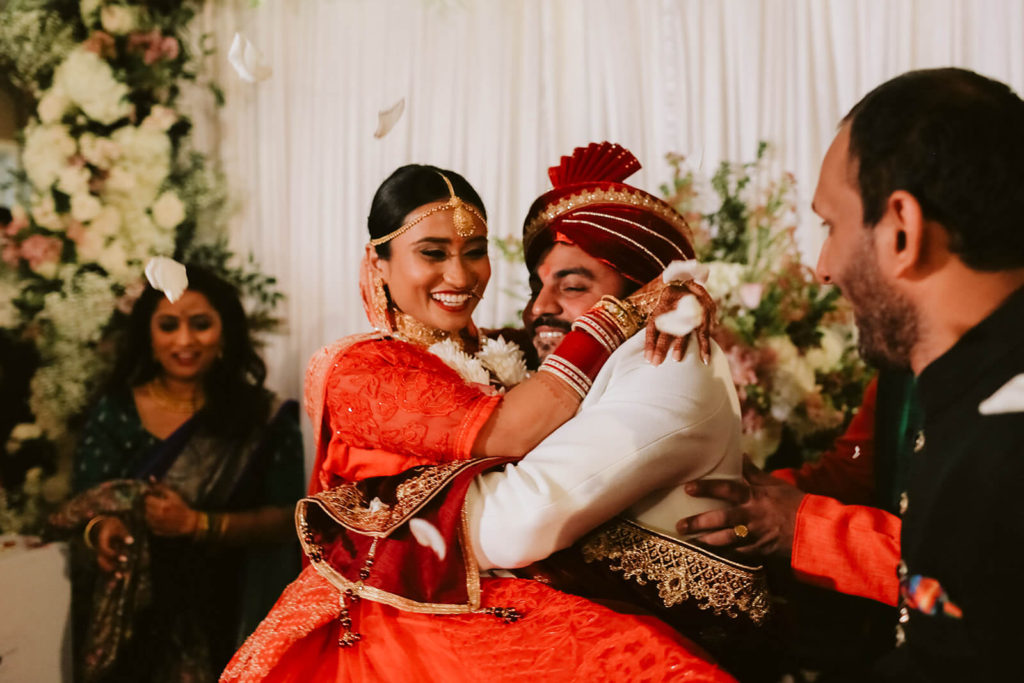
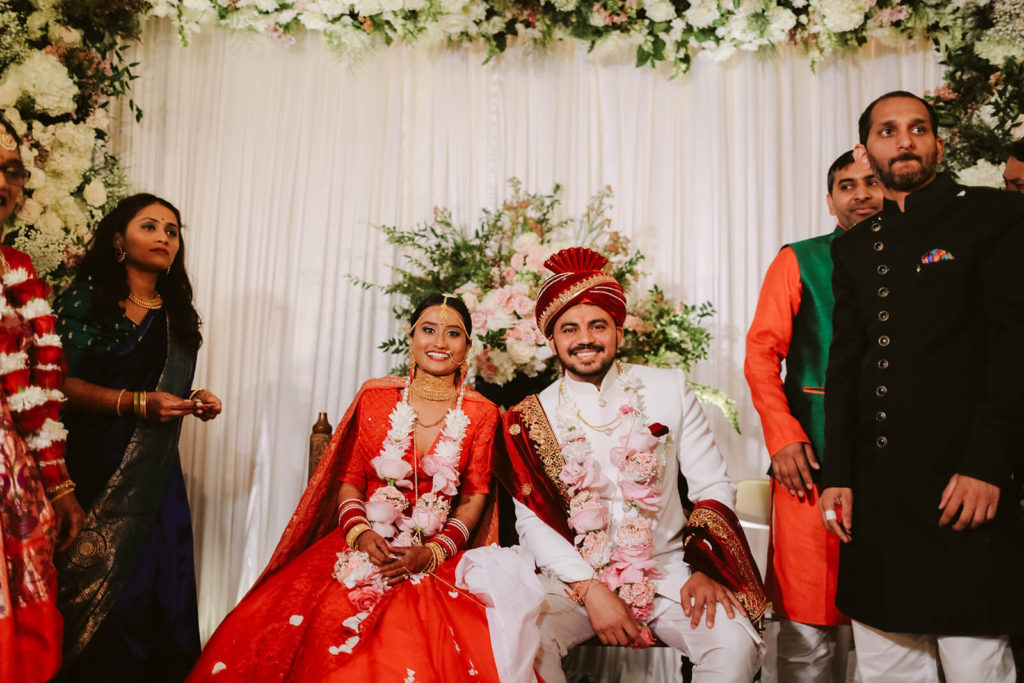
A Bit of Rain Can’t Stop Love
Originally intended to be an outdoor ceremony, the weather had other plans. Tithi and Sujal had to move their wedding from the lawns where they had performed the Vidhi ceremony and decorated the mandap the day before to the Tennessee Riverplace’s indoor wedding hall. There was a bit of restructuring to be done to set up their wedding altar, but they adapted wonderfully. They had a new mandap set-up complete with floral decorations and an altar in front of it. No one would have known!
There are several parts to an Indian wedding ceremony but one of the key features is the fire that constantly burns in the center of the altar. The fire is in honor of the god Agni and is used as a symbol of the viability and meaningfulness of the wedding. Offerings of rice and sometimes ghee are made into it throughout the ceremony.
Tithi was escorted by her family to the mandap where Sujal and his parents were already seated and waiting. Sujal was veiled from seeing her enter and when he was unveiled the two exchanged sacred garlands in the Jai Mala ritual, similar to the exchanging of rings in American weddings.
The granthibandan part of the ceremony is when the couple officially “ties the knot.” Sujal and Tithi were tied together with a golden thread to represent the joining of their souls in their new life as a married couple. Prayers to the gods were made over them to ask for a strong and healthy marriage, and the wedding ceremony concluded with the Saptapadi or the seven steps around the sacred fire. These steps are the most significant part of an Indian wedding ceremony and once the last step is taken, the couple is officially seen as married.
The night of festivities ended with a celebratory feast and a final send off for the bride and groom. Vidaai is the final part of Indian weddings when the couple leaves in a grand recessional. Sujal’s previously stolen shoes were returned to him, and their family blessed the car that was waiting for the newlyweds with tilak, perfumed water, and touches for good luck. Tithi’s father led her to the open car door and wrapped her in a shawl before ushering her off to her new life with her beloved Sujal.
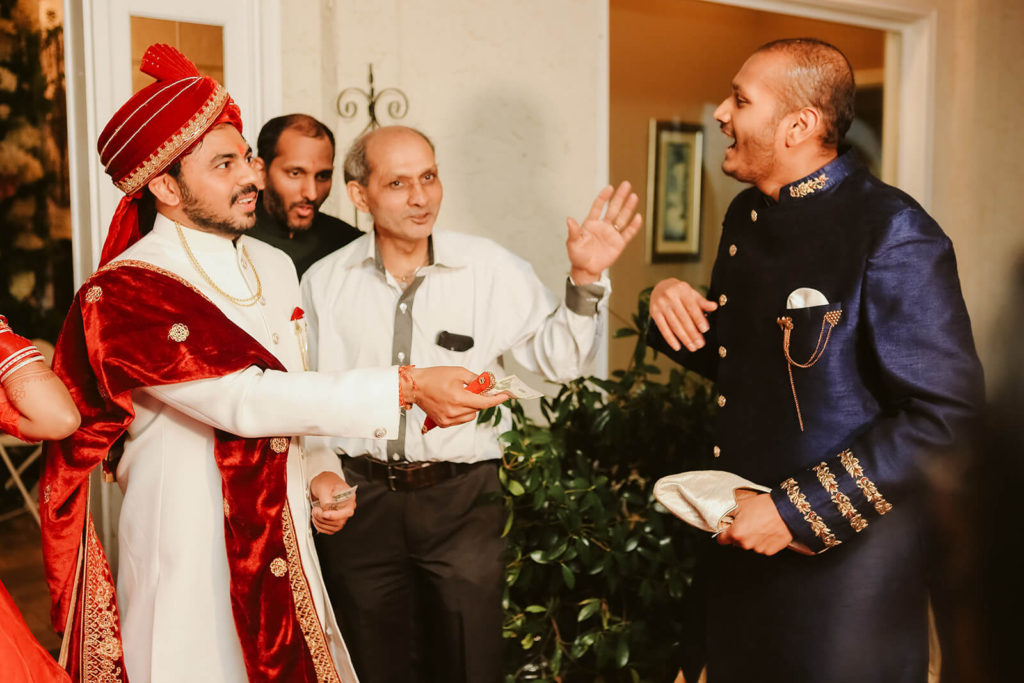
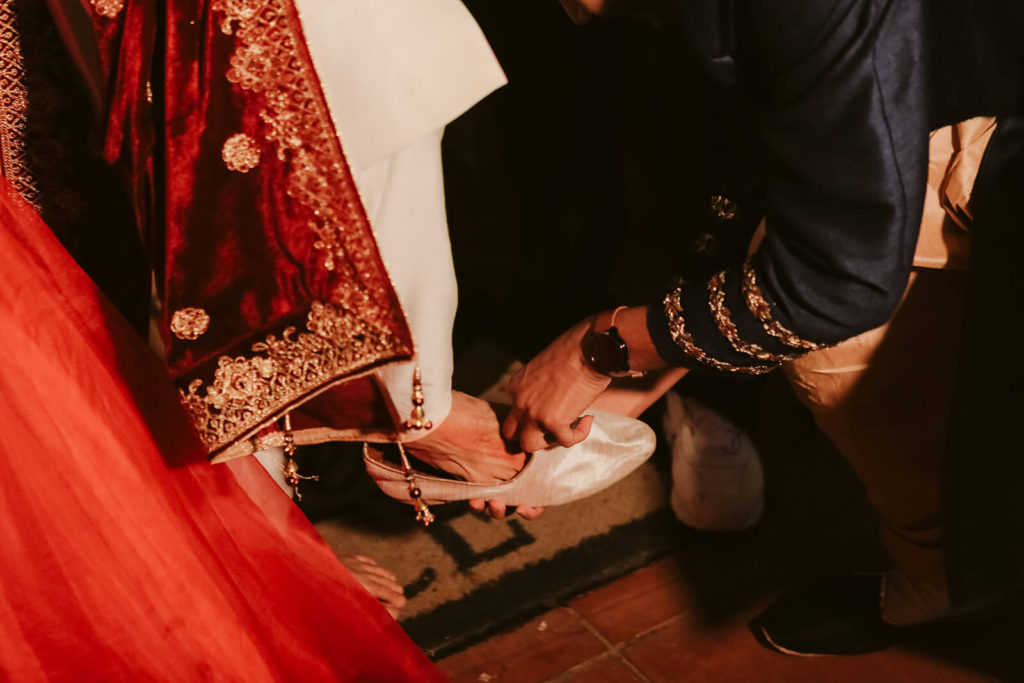
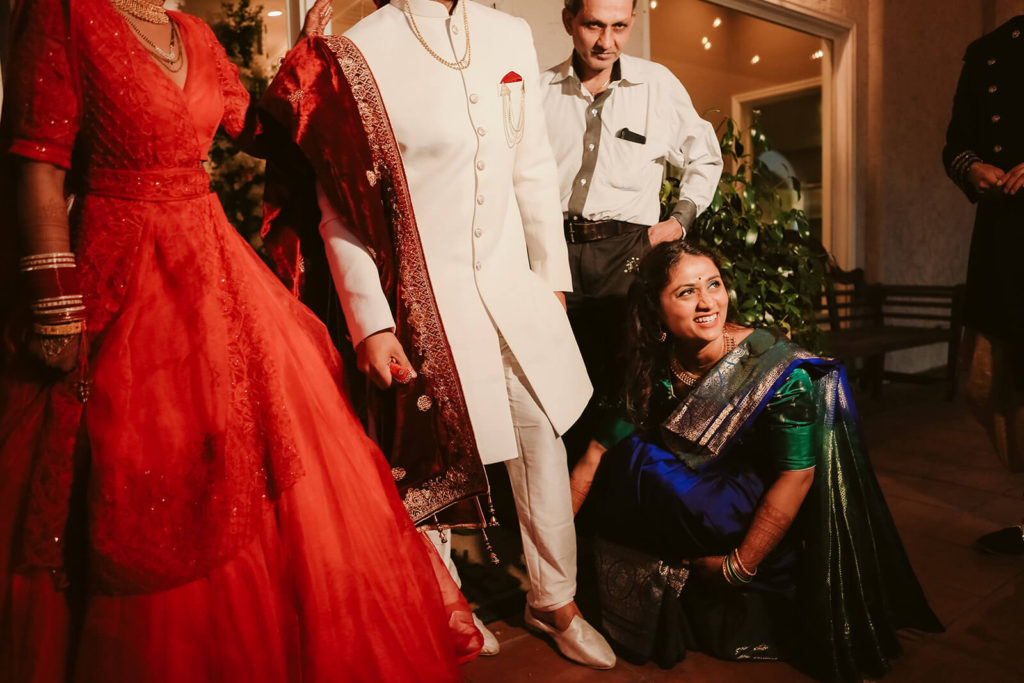
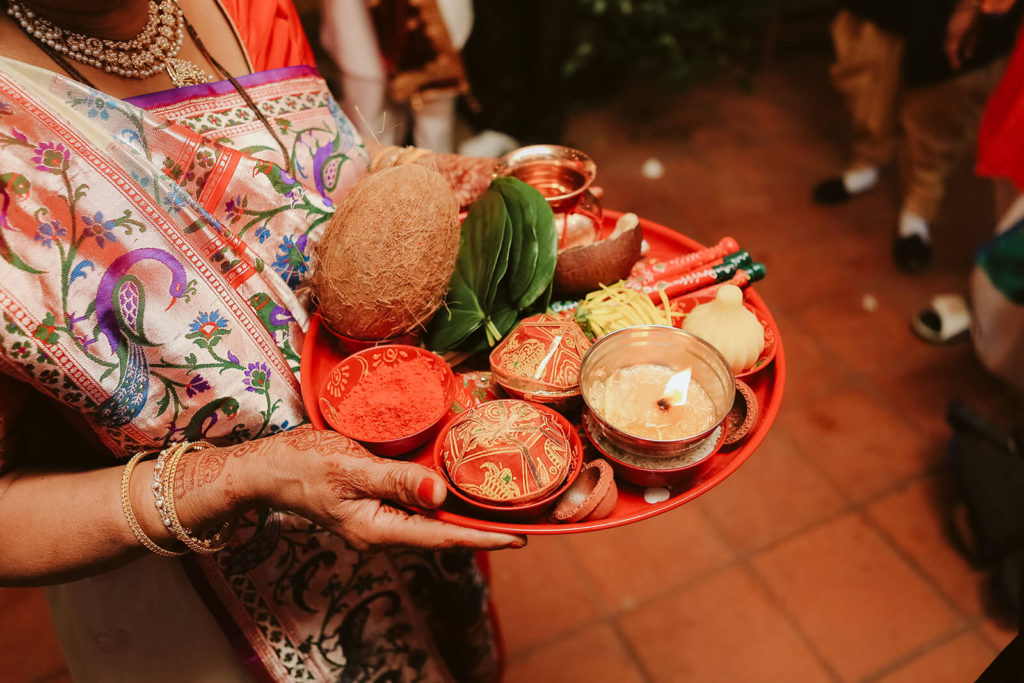
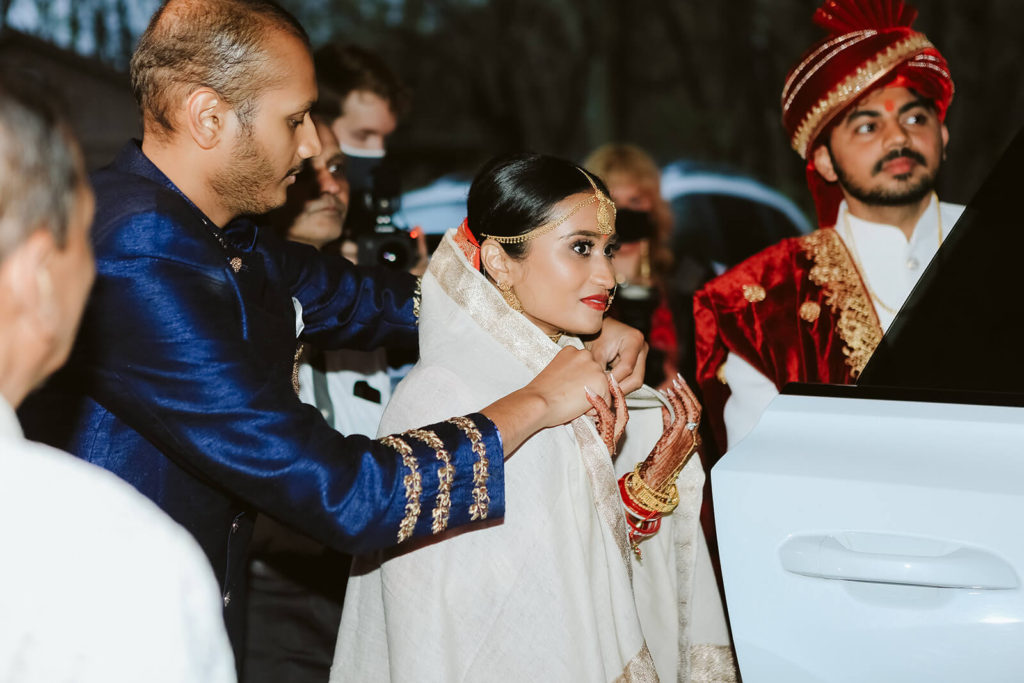

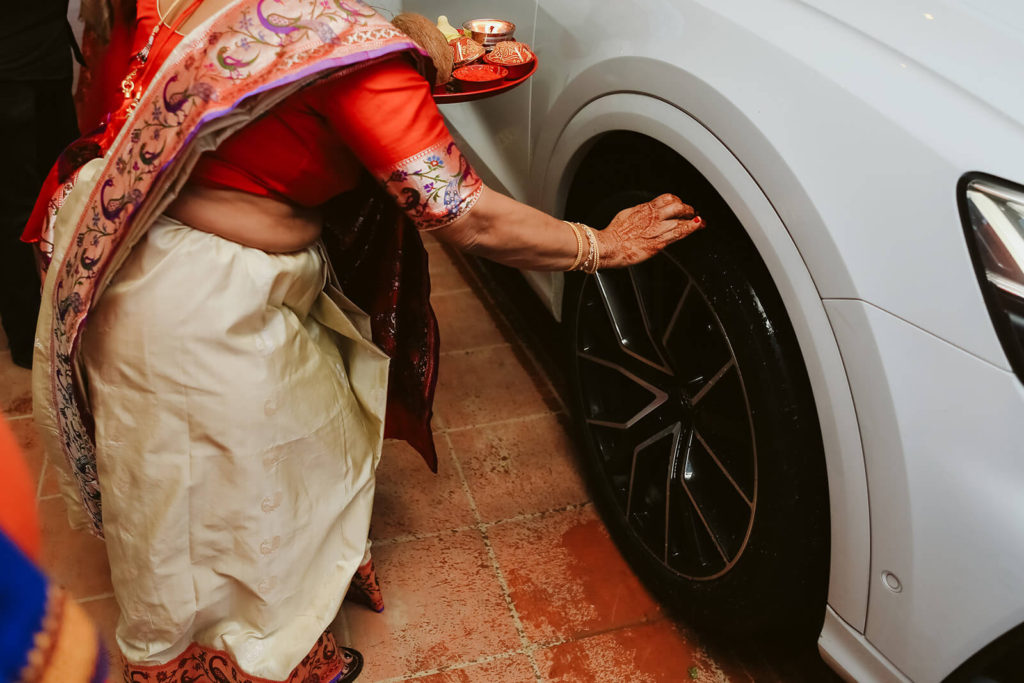
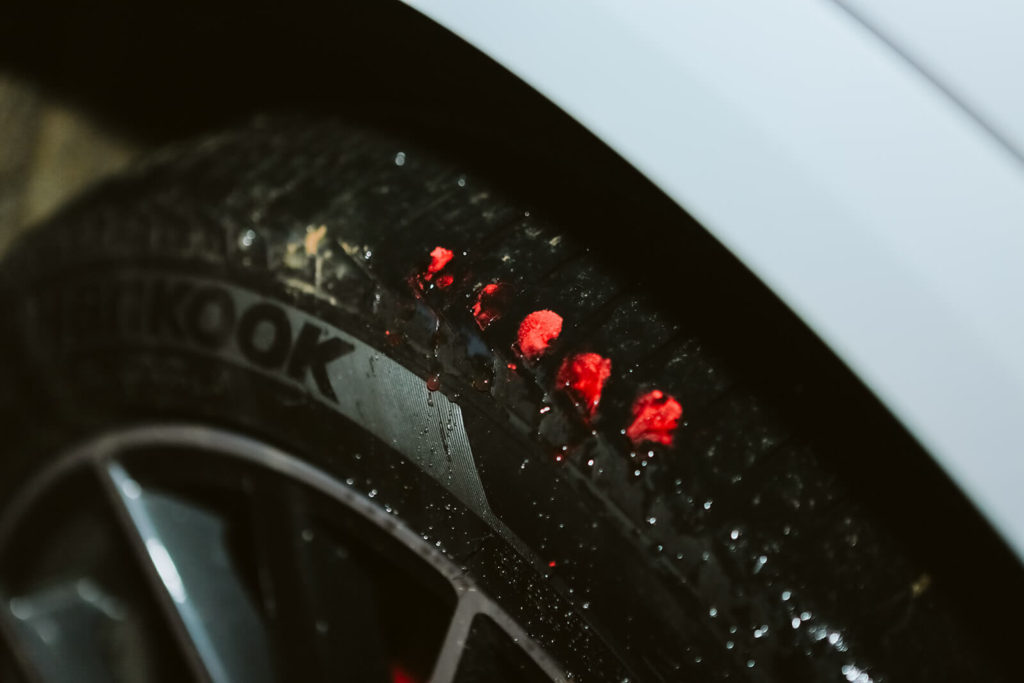
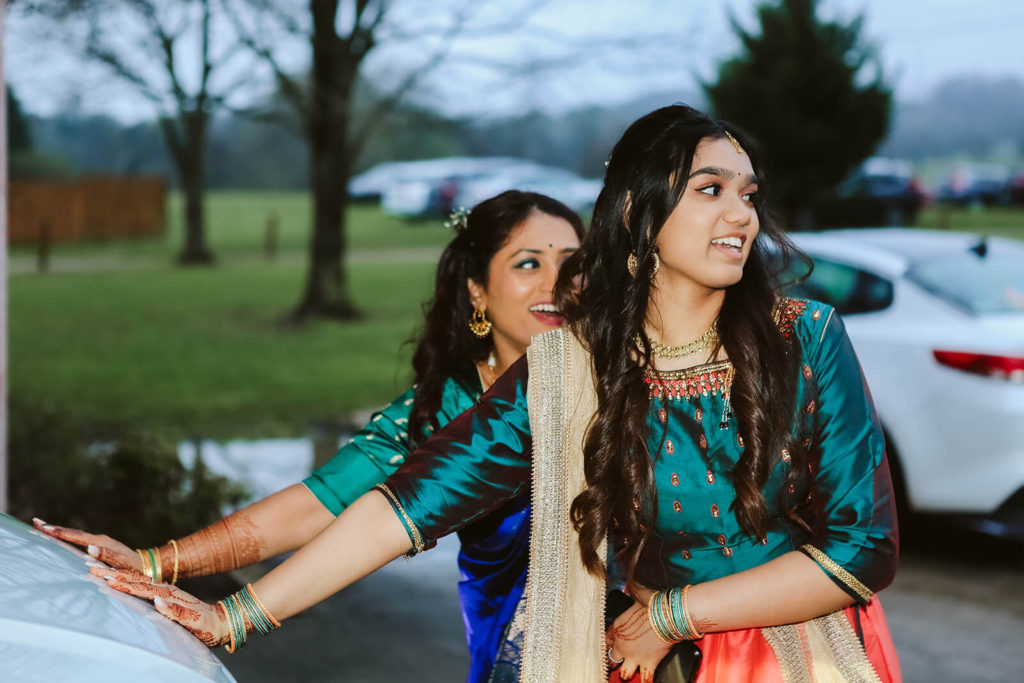
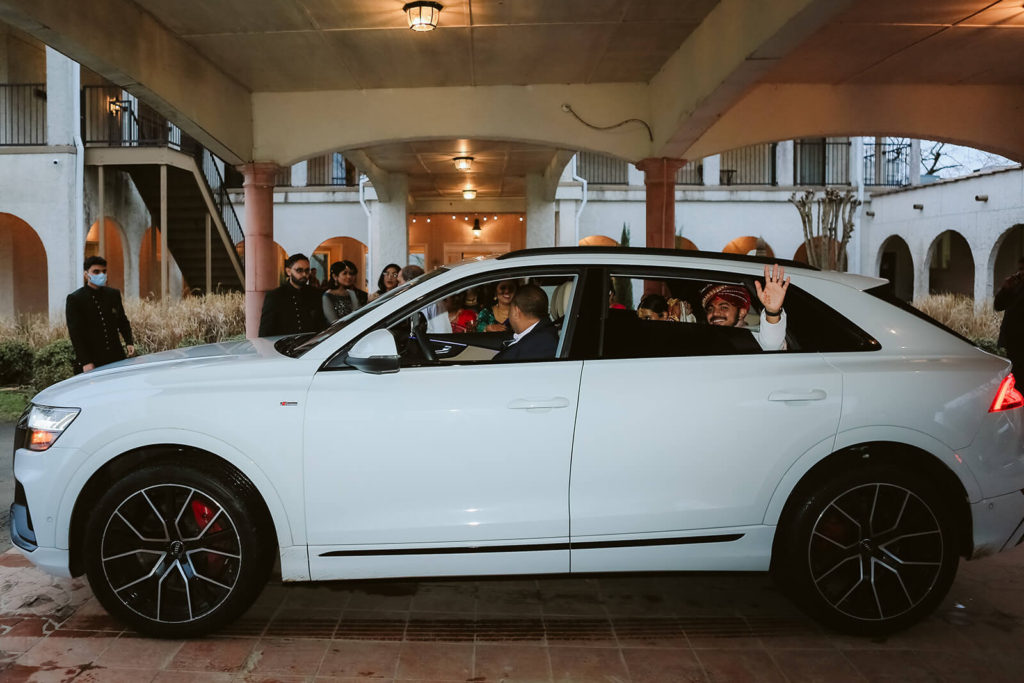
Are you planning a wedding as unique as Tithi and Sujal’s? Maybe you’re planning a special ceremony in honor of your culture, and you want as many memories of it as possible.
Well, you’re in luck! I’m Rachael Crowe of OkCrowe Photography. I’ve photographed hundreds of weddings in the Chattanooga area and beyond. I’d love to be part of yours as well! Whether you’re having a standard American wedding or planning an entirely traditional ceremony to honor your heritage, I’ve got you covered. I have an eye for details and the photos to prove it! I’d love to sit down and chat with you! Just fill out my contact form and let’s start planning the wedding of your dreams!

Wedding Vendor Information:
- Wedding Photographer: Our Ampersand Photography
- Wedding Venue: Tennesse River Place
- Sangeet Venue: Marriott Downtown Convention Center

LEAVE A COMMENT
Comments Off on South Asian Indian Wedding at the Tennessee Riverplace, Chattanooga | Tithi + Sujal